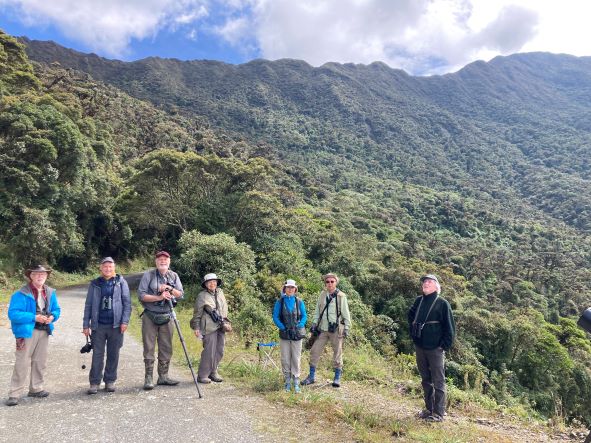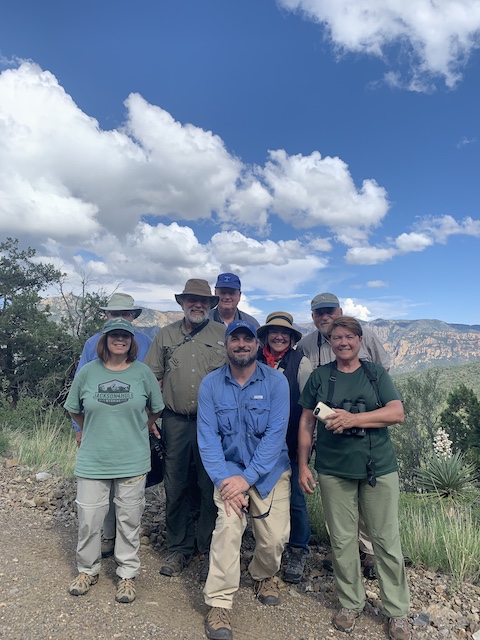From the Field
December 13:
Rich Hoyer recently finished an excellent tour to the Yucatan Peninsula in Mexico
The birding in the Yucatan Peninsula on this year’s tour was simply fun. Everywhere were reliable numbers of our North American breeding species – Magnolia Warblers and White-eyed Vireos dominated almost every stop, but Northern Parulas, American Redstarts, Hooded Warblers, Least Flycatchers, and so many others made every stop a delight.
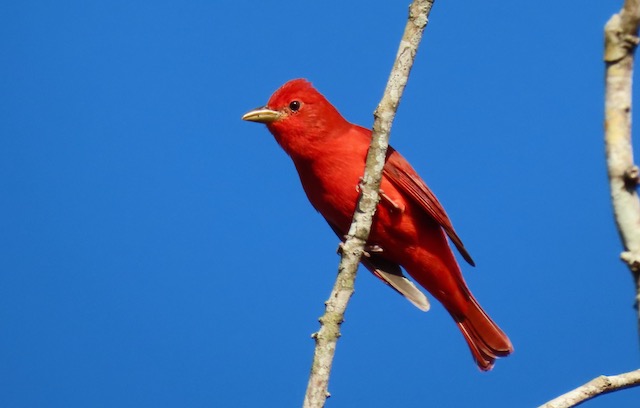
This Summer Tanager made it to the short list of favorites by being so cooperative.
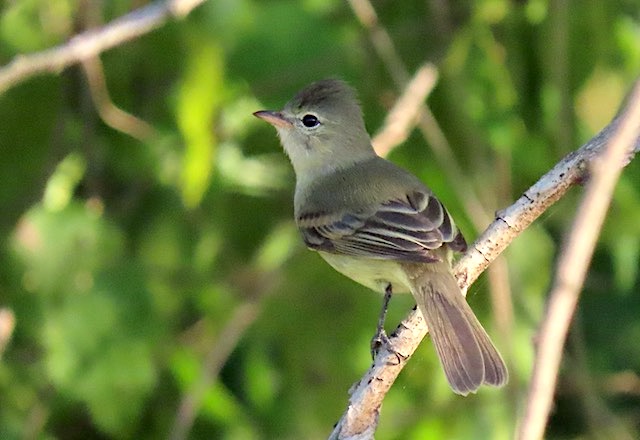
Amongst all the migrants were good numbers of tropical residents, such as furtive Bright-rumped Attilas, chattering Red-crowned Ant-tanagers, primped Turquoise-browed Motmots, rambunctious Keel-billed Toucans, and this cheeky Northern Beardless-Tyrannulet that arrived to mob one of many Ferruginous Pygmy-Owls we found.
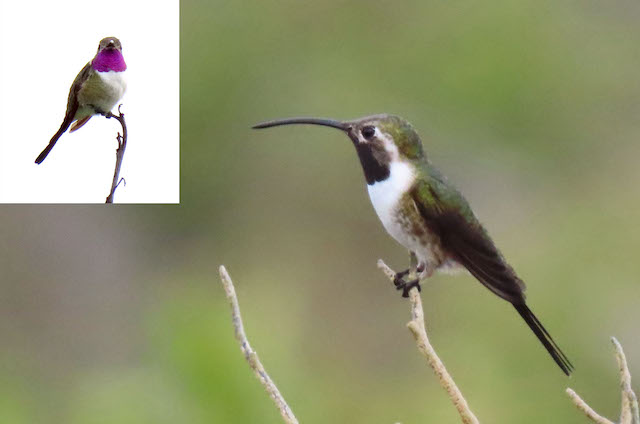
One thing that makes this region special are the regional endemics, and we saw all the expected ones – Yucatan Wren, Yucatan Gnatcatcher (the recent split from White-lored), Black Catbird, and many others. Mexican Sheartails were common this year, though the amazing color of the male’s gorget was visible only if the light was just right.
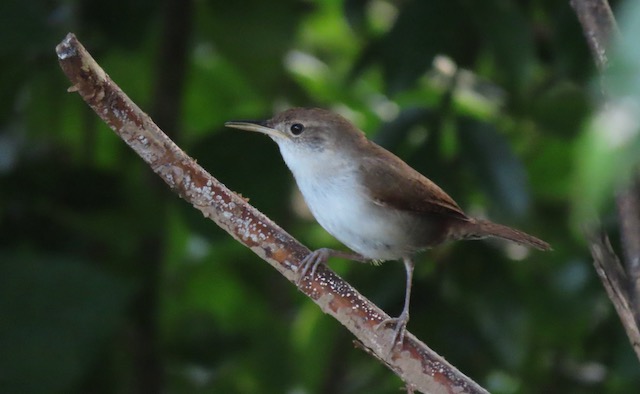
We also scored all the endemic species and the most distinctive subspecies on Cozumel with not too much trouble, and the Cozumel Vireo was a popular bird for the group. After having such great views of and listening to the song of this amazingly distinctive endemic subspecies of House Wren (Troglodytes aedon beani), we were all left wondering only when, not if, it will be split.
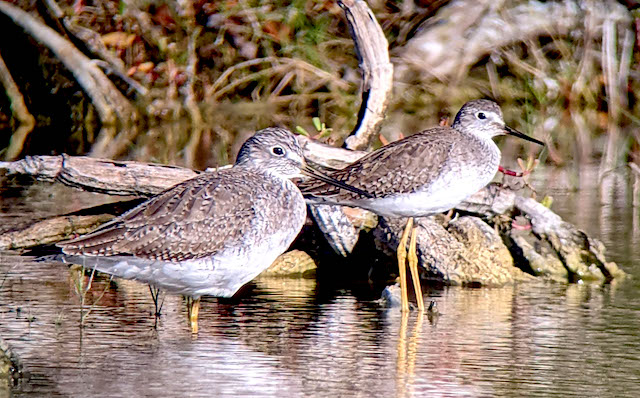
Water birds were a big part of this year’s tour, with our newly revised itinerary giving us a full day and a second morning in the Rio Lagartos area, where we tallied eleven species of heron and egret and 24 species of shorebird. A close comparison of Greater Yellowlegs and Lesser Yellowlegs like this is quite a treat. (photo by Rich Bayldon)
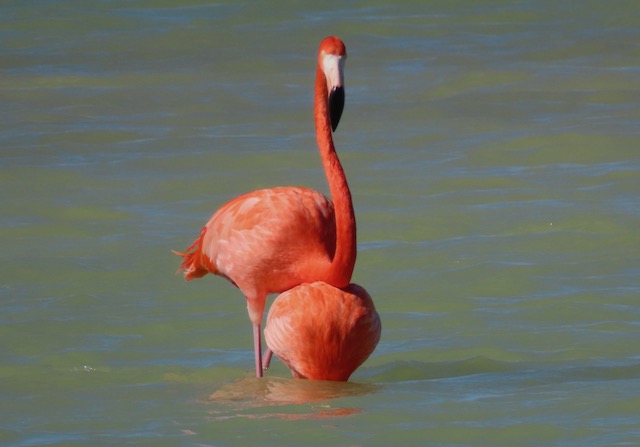
We estimated well over 1000 American Flamingos on the salt ponds, and this pair provided for a racy moment as the male came up from behind and mated with the female while she continued to act as if feeding.
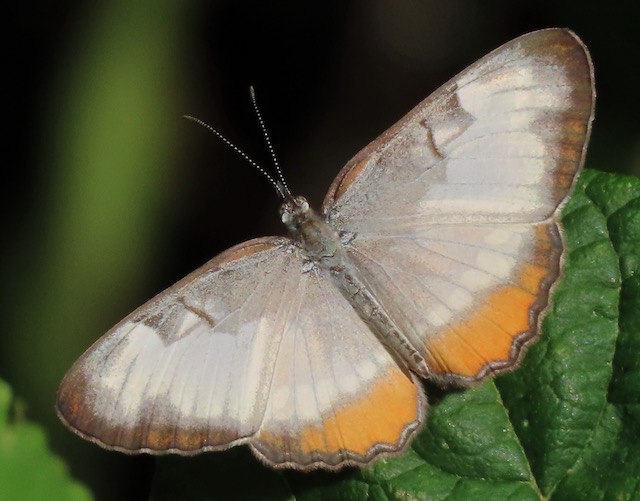
There was never a dull moment, with so many other interesting critters drawing our attention, such as polydesmid millipedes, two species of army ants, and colorful butterflies, such as this Northern Mestra.
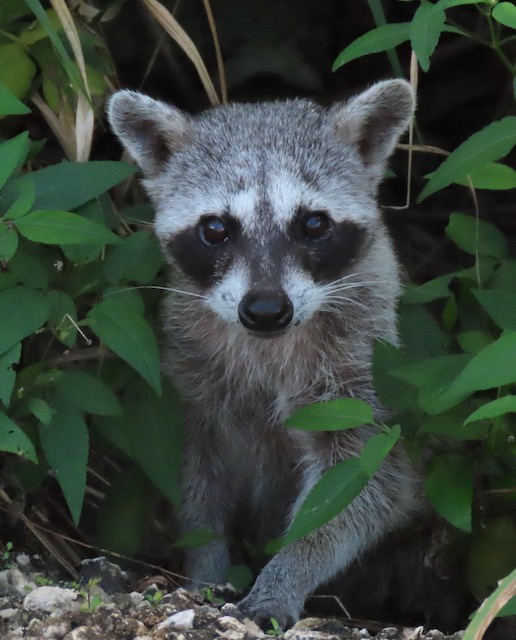
Unlike the mainland species, the smaller and endemic Cozumel Raccoon was charming in its almost polite, demure way of asking for a handout.
December 9:
Luke Seitz has reported back from a successful trip to Guyana
We just wrapped up our Guyana tour in fine fashion, with over 400 species of birds and a long list of other highlights, from mammals to food to waterfalls.
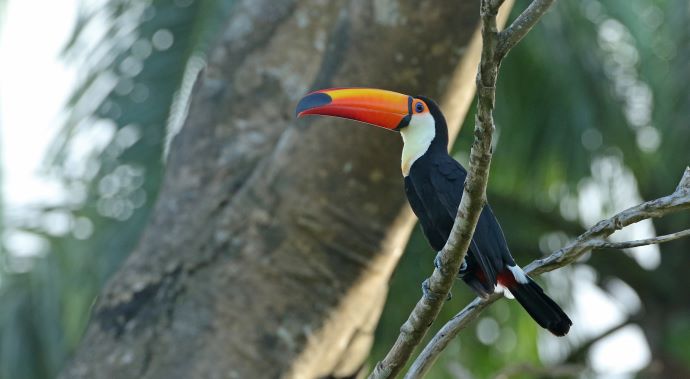
It’s a stunning, birdy, welcoming country, perhaps my favorite tour to guide…starting off bright, with Toco Toucan in Georgetown…
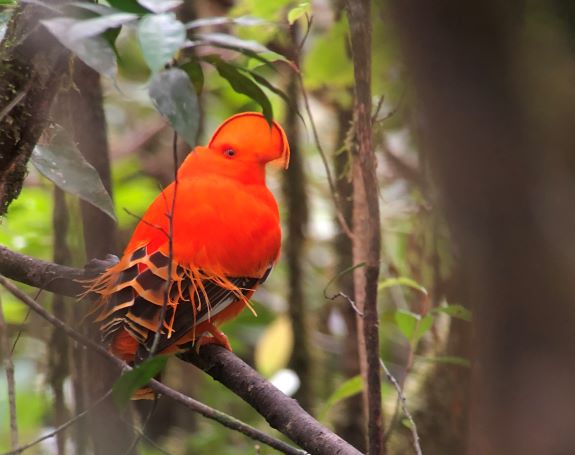
…and quickly transitioning to the one of the stars of the entire trip, the must-be-seen-to-be-believed Guianan Cock-of-the-rock!! This year, at least a half-dozen males provided long scope views and photo opps…
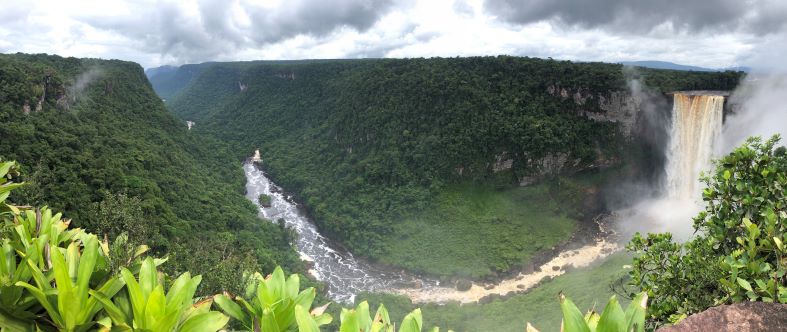
…and not far from the scenery peak of the tour, the ridiculous Kaieteur Falls, apparently the largest single-drop waterfall in the world (by volume).
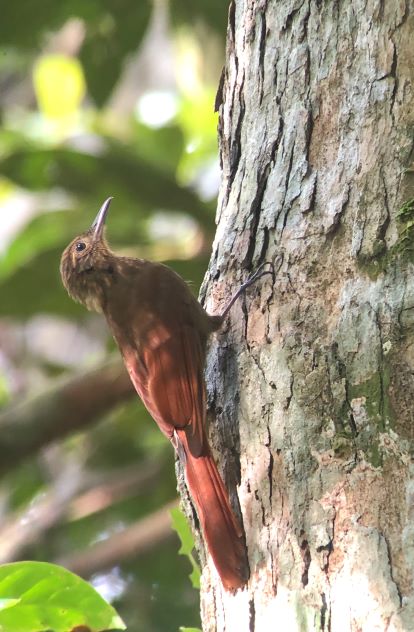
From here, we spent several days working through mixed flocks and eking out shy forest species, somewhat more challenging but certainly rewarding. Here’s a rare Long-tailed Woodcreeper that posed beautifully near Atta Lodge…
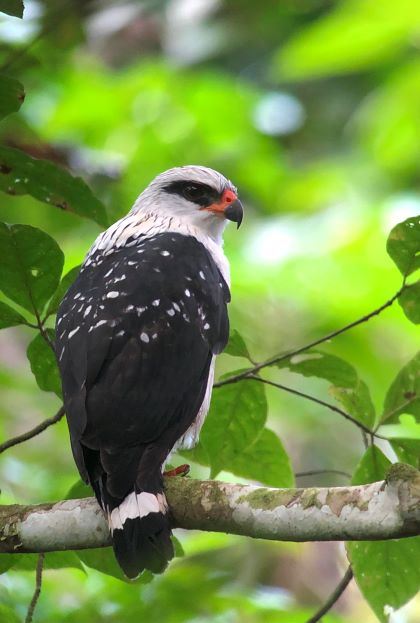
…and a silent Black-faced Hawk perched along one of the forest trails, oblivious to its excited onlookers!
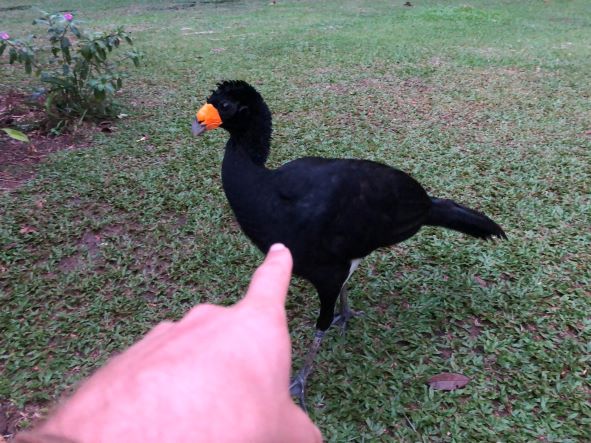
Not everything in the forest was challenging, however…the Black Curassows at Atta Lodge are getting friendlier by the week, now brazenly running INTO the dining room at times!
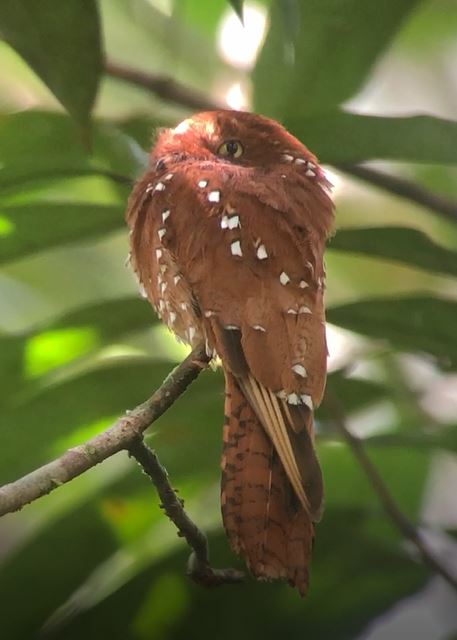
One of the top birds of the trip was this Rufous Potoo, rare and enigmatic throughout its range. This is only one of a handful of known sites in the world, and although it required wet feet, it was well worth the pain. We stood transfixed as it gently swayed back-and-forth, as if to mimic a dead leaf in the breeze…
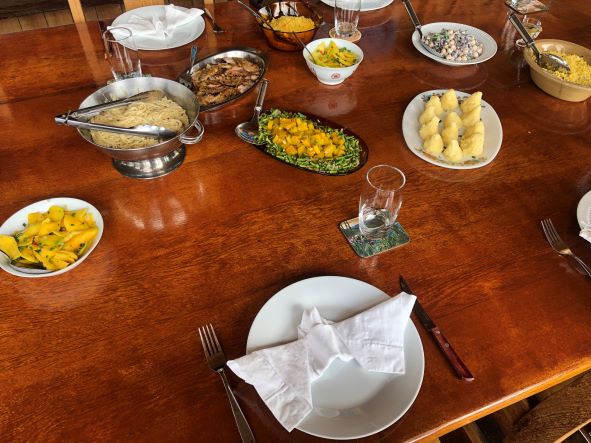
From the forest, we transitioned abruptly to birding in the extensive Rupununi savannah, where birds like Sun Parakeet and Red Siskin performed brilliantly. They were very nearly outshined by this glorious lunch on one of the final days of our trip, even more proof that Guyana is a simply wonderful destination. I’m already looking forward to the next tour!
November 21:
Jon Feenstra reports from southern Ecuador
This was my first time out of the country (or Southern California) since the onset of the pandemic and only my second trip away from home, so it was excellent to get back on the road again to southern Ecuador of all places, perhaps my favorite place to bird on the planet. I was joined by 7 equally eager birders. We enjoyed a marathon 16 days of birding, 517 bird species, and all of the parks, reserves, and great lodges that were happy to be back in business.
Southern Ecuador is a trip of extremes through elevations high and low, rainforests, deserts, tropical deciduous forest, paramo, mangrove forests, wetlands, and the expected diversity of birds that such a diversity of tropical habitats bring.
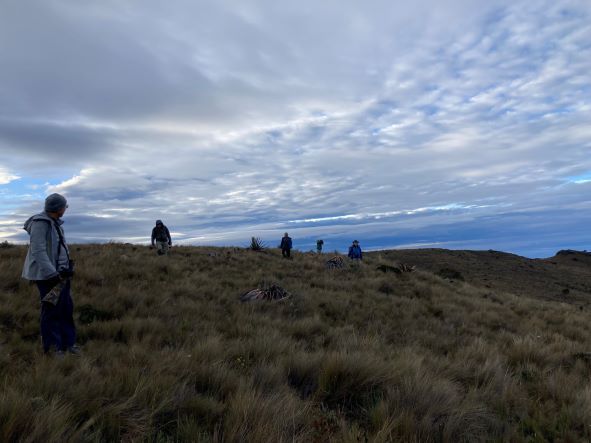
Here the group walks through the paramo of Cerro de Arcos, the isolated home of the Blue-throated Hillstar, a hummingbird only first discovered by birders in 2017.
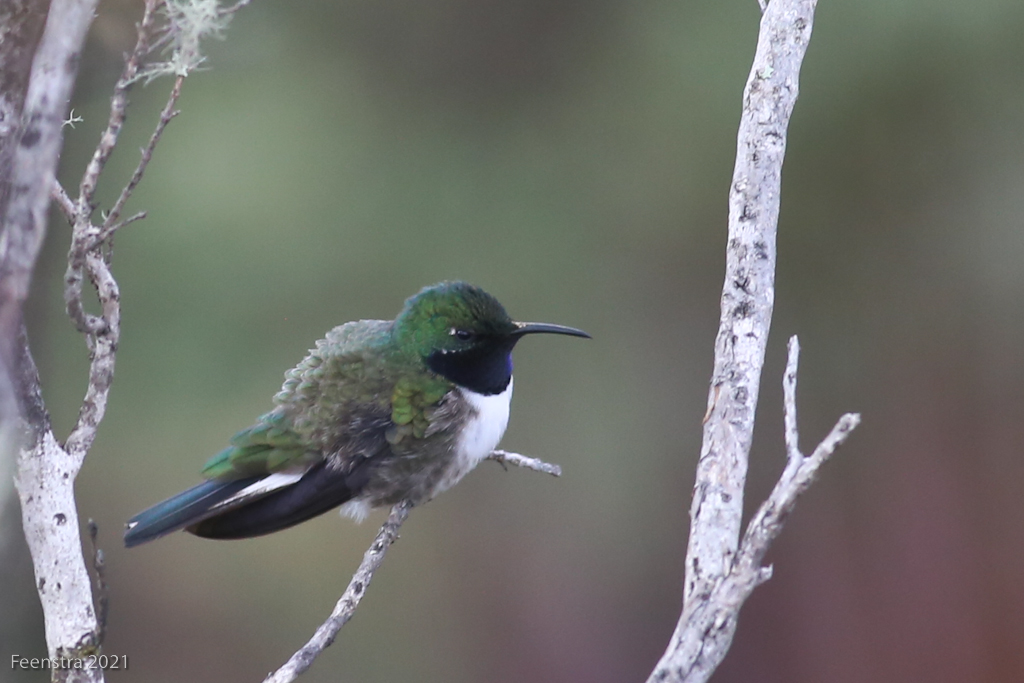 We not only got to see the Blue-throated Hillstar quite close on its favored perch, we watched it feed on its obligate chuquiragua flowers and buzz around its territory.
We not only got to see the Blue-throated Hillstar quite close on its favored perch, we watched it feed on its obligate chuquiragua flowers and buzz around its territory.
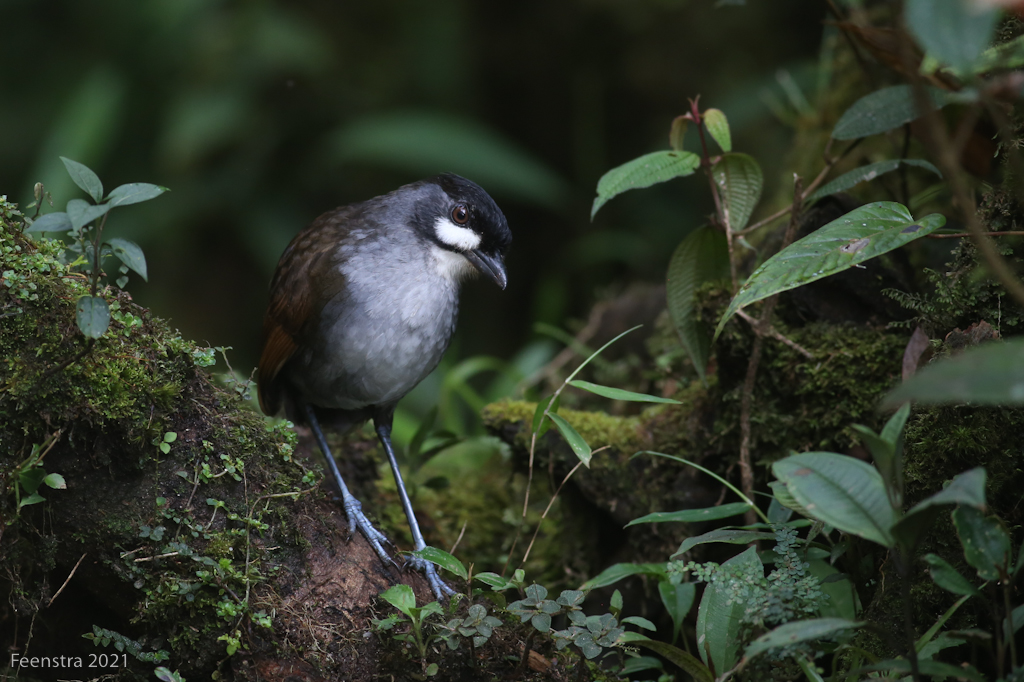
Though the trail was a long muddy slog, we got up into the deep forest of the Tapichalaca Reserve to see perhaps the most famous bird in southern Ecuador, the spectacular Jocotoco Antpitta.
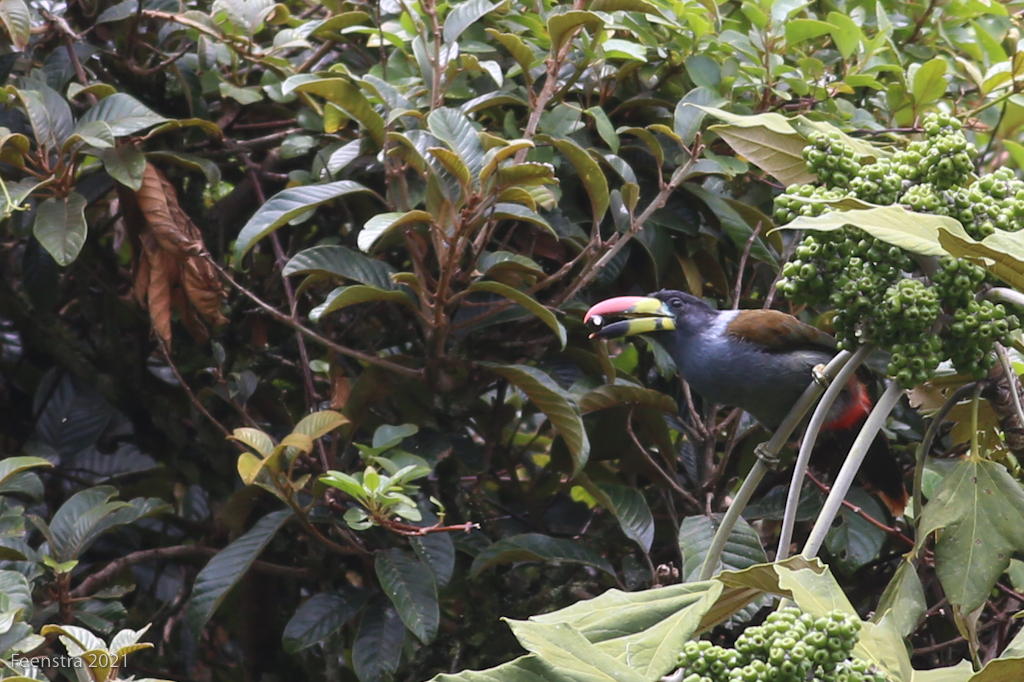
Gray-breasted Mountain-Toucan is another big, wild-looking thing of the high country. This one came in quietly and gave us a great view.
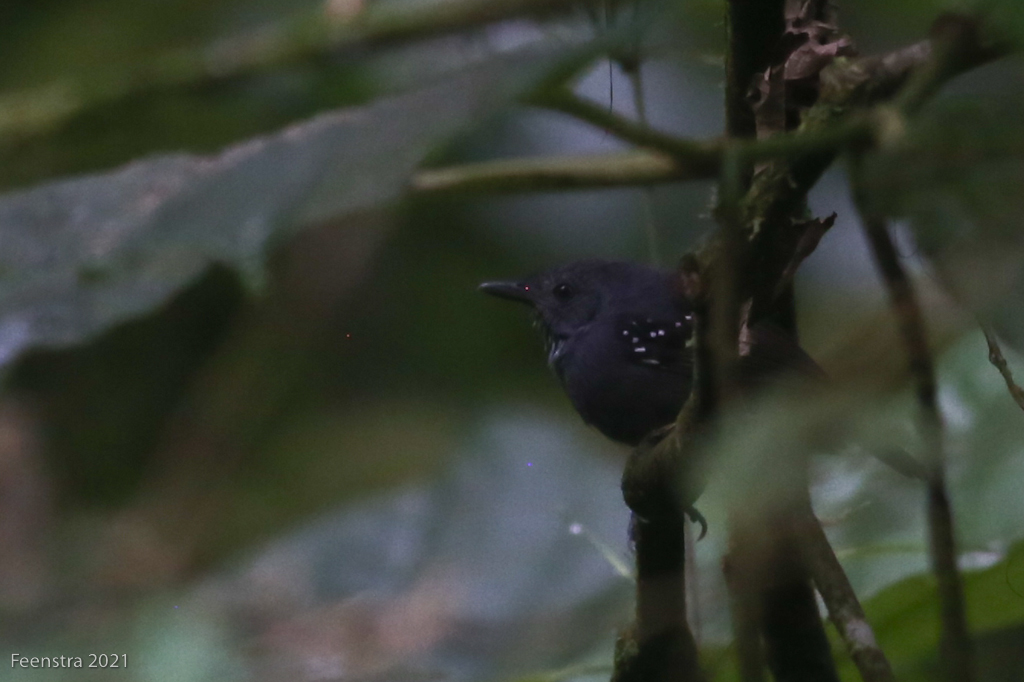 Lower down, Amazonian foothill specialties like this Foothill Stipplethroat intersected our birding travels in the lower Cordillera del Condor, an isolated tepui ridge along the Peruvian border. With the help of GPS, we found that the road actually crosses unmarked into Peru for about 500m, so we took the opportunity to stop and add some birds to our Peru list.
Lower down, Amazonian foothill specialties like this Foothill Stipplethroat intersected our birding travels in the lower Cordillera del Condor, an isolated tepui ridge along the Peruvian border. With the help of GPS, we found that the road actually crosses unmarked into Peru for about 500m, so we took the opportunity to stop and add some birds to our Peru list.
I was having too much fun watching things, so missed photo opportunities of some of the other highlights like Long-wattled Umbrellabirds on their lek, an Orange-throated Tanager glowing in the fog, Horned Screamers shuffling around, or the Watkin’s Antpitta nonchalantly poking around in the leaf litter. It was great to be back!
October 16:
Skye Haas reports from Cape May:
Cape May, New Jersey is undoubtedly the capital of birding in North America, and WINGS' first visit since 2014 did not disappoint! A migration tour always makes a leader a touch nervous as unlike going to a fertile breeding area or a region where hordes of birds spend their winters, there is quite the roll of the dice to see if there will be favorable conditions for migration or not. But as it turned out, we rolled a natural 20 and our days were full of birds, mirth and pleasant weather! We tallied in an impressive 151 species of birds for the week with warblers (18 species), shorebirds (25 species) as well as great raptor flights and a handful of goodies that were not on our radar. Highlights we encountered included European Wigeon, Great Cormorant, 4 Roseate Spoonbills, Hudsonian Godwits, Avocets, Blue Grosbeaks and an afternoon that was just filled with Kestrels and Merlins winging their way southward. One day we got up early and took the Lewes ferry to Delaware where we saw our only Brown-headed Nuthatches of the trip and then experienced the shorebird bonanza of Bombay Hook NWR. Another morning we boarded a flat-bottomed boat to explore the coastal salt marshes with flocks of herons and egrets as well as saltmarsh specialties like the Diamondback Terrapin. One of the true delights of this tour is how little time we spent in the van. Most of our days we birded in a five mile radius, drifting from the Morning Flight Count to the Hawk Deck to enjoying flocks of Black Skimmers on the beach in front of our inn. Cape May is an adorable resort town and our evening meals were excellent with many participants bending towards the ample local seafood . And everywhere one went, there were groups of birders enjoying their Cape May experience like us. It felt like community, and I’m already looking forward to next year’s tour.
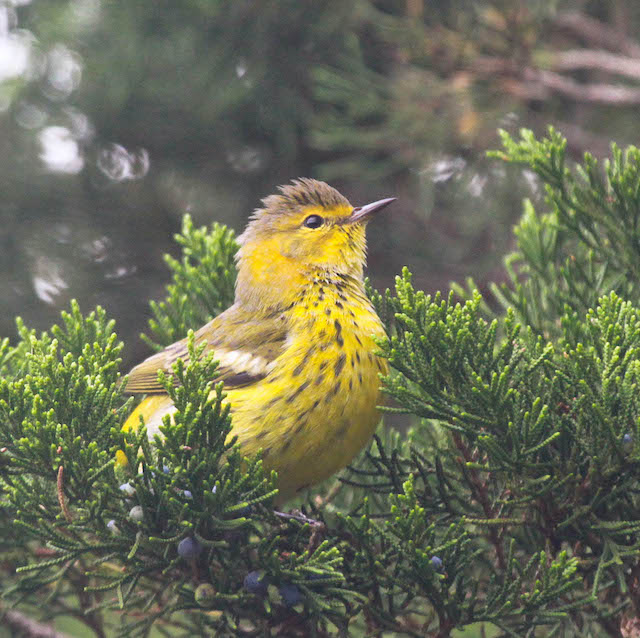
Cape May Warbler
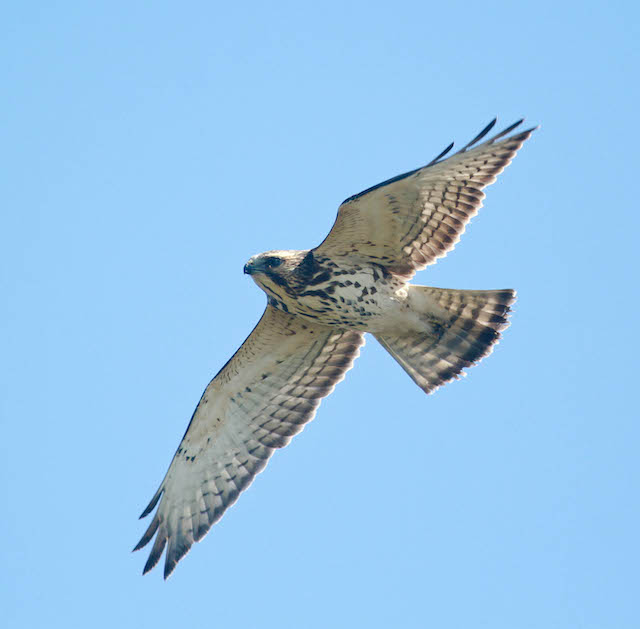
Broad-winged Hawk
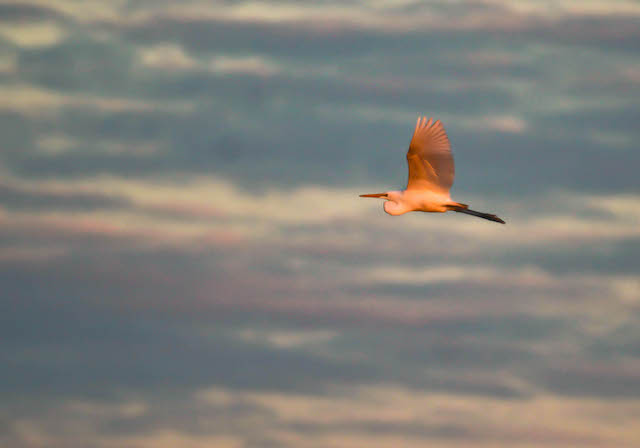
Great Egret
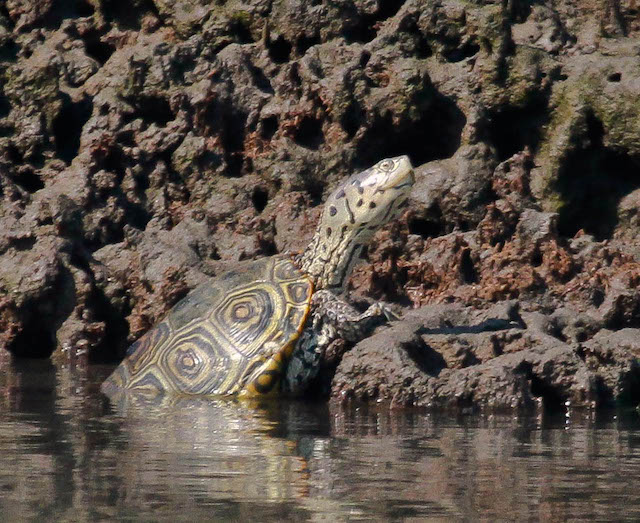
Diamondback Terrapin
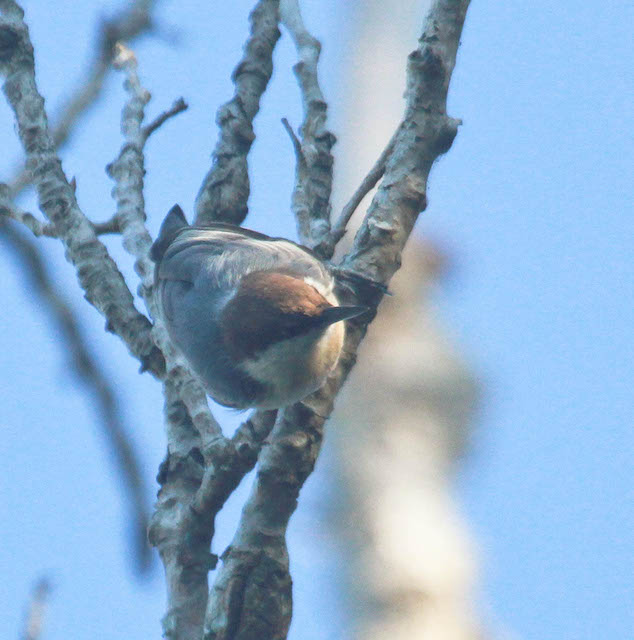
Brown-headed Nuthatch
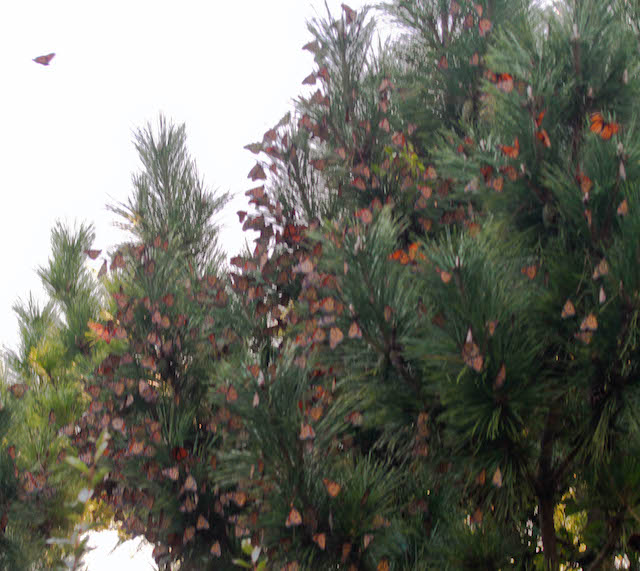
Monarch Butterflies
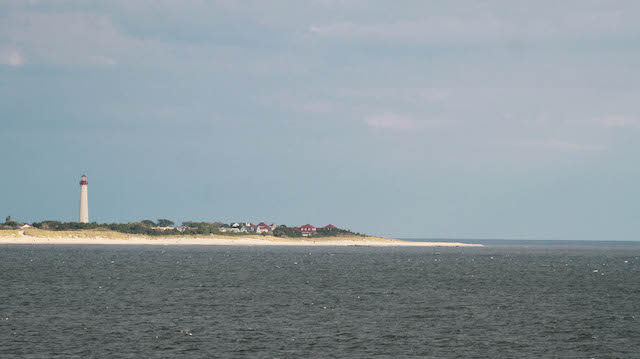
Cape May Lighthouse
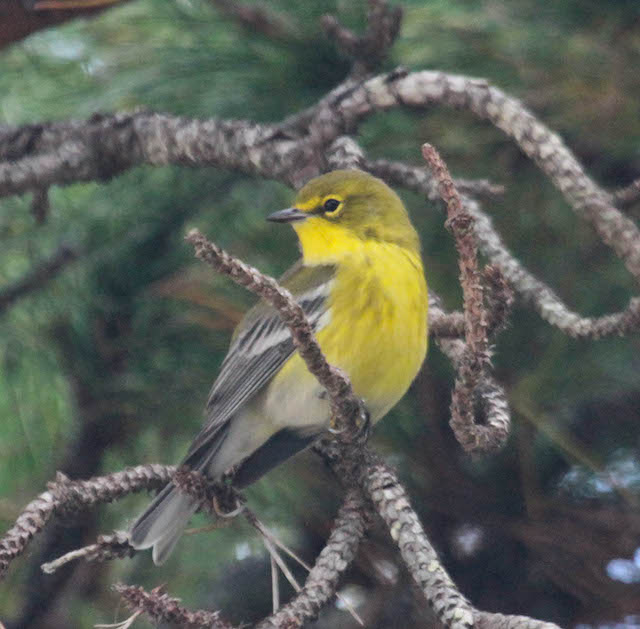
Pine Warbler
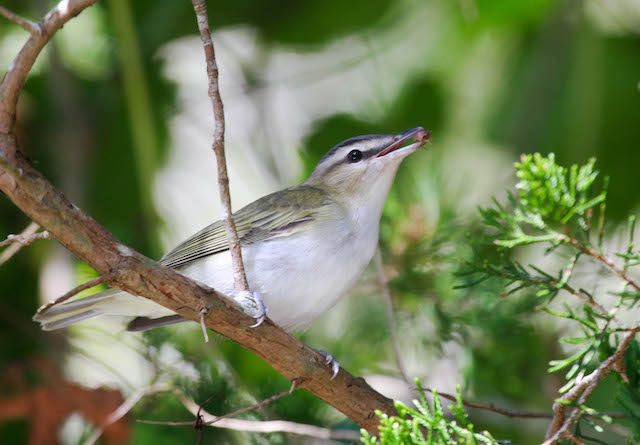
Red-eyed Vireo
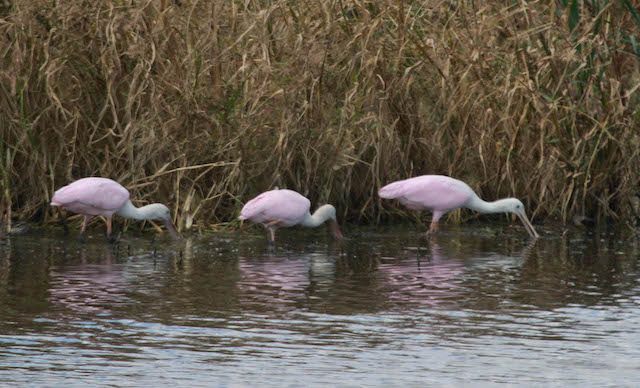
Roseatte Spoonbills
October 11:
Rich reports from the Madre de Dios region of Peru.
The rainforest lodges of Madre de Dios were an abrupt but delightful change of pace from the first Peru tour, where we had been mostly in mountains of the neighboring department of Cusco. For one, it was warm and humid, though on two days we were under the influence of a late cold front, when the overcast skies and cooler temperatures were quite welcome.
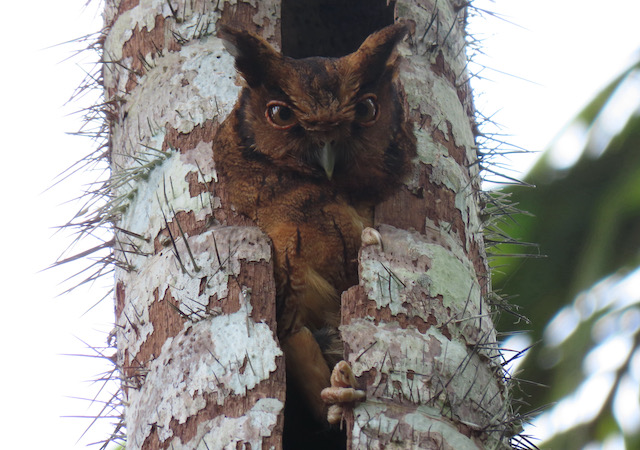
We walked every day, piling on the miles, but one of the most enjoyable aspects of this tour is being able to bird right outside our rooms. It was right there when we heard a ruckus from inside a dead, hollowed-out palm trunk, and we looked up to see this Tawny-bellied Screech-Owl indignantly poking its head out of the top.
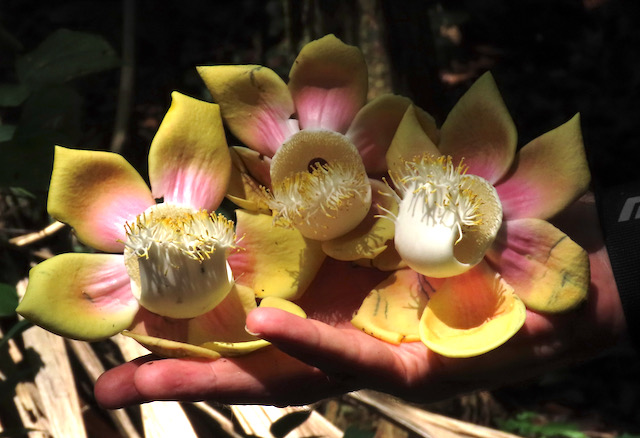
Another treat was walking the same trails on multiple days – and discovering how different they can be from one day to the next. On our first pass by a large tree dropping red fruits to the ground, a group of Pale-winged Trumpeters approached and put on quite a show. The next time we passed there, a stunning Plum-throated Cotinga sat just under the canopy for extended views. And on a third visit we flushed a Ruddy Quail-Dove off its nest with two eggs, right next to a stunning cannonball tree (Couroupita guianensis) that was dropping its flowers all around the tree.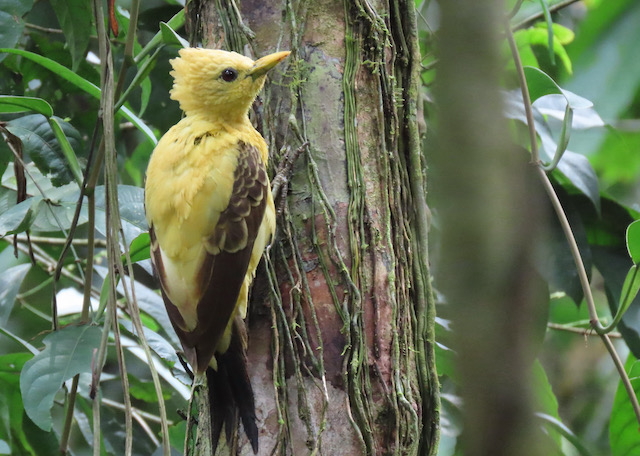
And yet on another pass on the same trail, this female Cream-colored Woodpecker perched at eye-level very close to the trail and sat there for an extended time, seemingly unafraid of our presence.
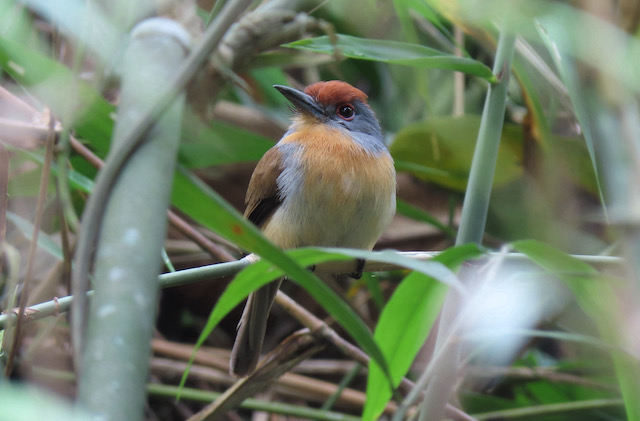
We birded one of the closer trails to the lodge several times in search of its bamboo specialties, and we were surprised on one morning by a pair of very quiet Rufous-capped Nunlets low in the vegetation right off the trail.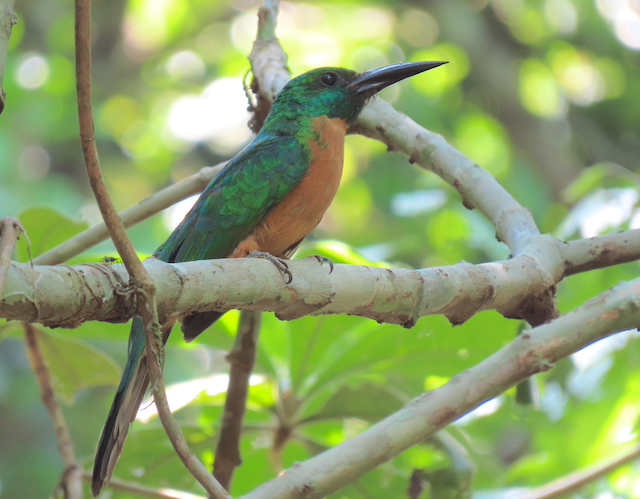
Then again there were some reliable birds, such as the lek of Band-tailed Manakins which showed well when we stood still near their favorite display area, and on our second stop they were even more cooperative. Or the pair of Great Jacamars that we found along the same stretch of one trail on several days. We suspected they might have had a nest nearby.
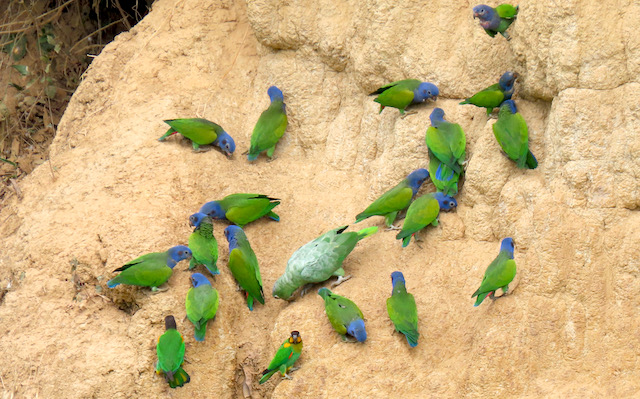
Two surprises at Los Amigos were a rare Brown-banded Puffbird that flew in quietly while we were scanning the canopy for a singing Western Striolated-Puffbird (which we ended up seeing on another day). Another was the scarce and very unpredictable Amazonian Parrotlet, which if found is usually just a quick-flying flock through the canopy. This year we saw pairs and multiple small flocks on five days, perched in trees and feeding right over the trails, offering great views of this bird that Don Stap wrote about in his popular book A Parrot Without a Name.
The last days of birding at Tambo Blanquillo were a nice change of pace, starting with a long boat ride on the Madre de Dios river. We spent most of a morning at the famous clay lick. It was a thrill to see a flock of about a hundred Red-and-green Macaws take off in a deafening flight. They never did come down to feed on the dirt, but many other species did, including this collection of Blue-headed, Orange-cheeked, and Mealy parrots.
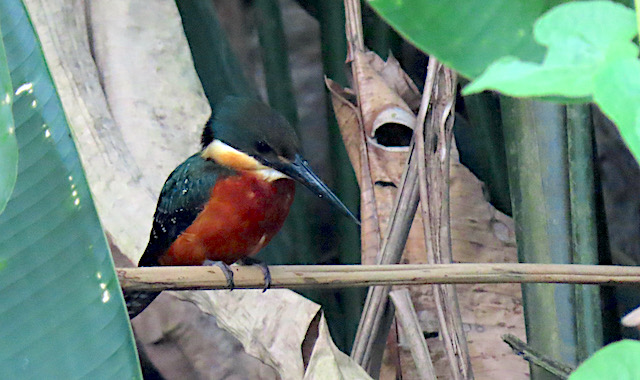
We had a delightful paddle around one of the oxbow lakes, where Pale-eyed Blackbird, dozens of Hoatzins, Greater Anis, Sungrebe, and many other species presented themselves. A favorite bird of the tour and a very lucky find was this lone Green-and-rufous Kingfisher, perched typically in the deep shade of the overhanging vegetation.
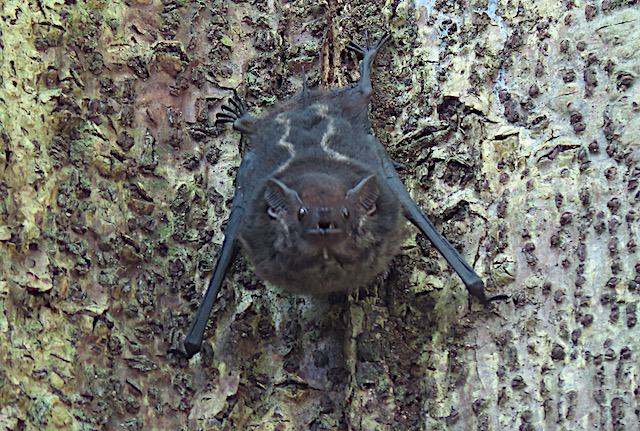
We also saw a fantastic variety of butterflies and other insects, frogs, and mammals, including nine species of monkey, many in abundance. Along one trail we looked up into a tree cavity only to see this sac-winged bat scramble out and perch in plain sight on the trunk.
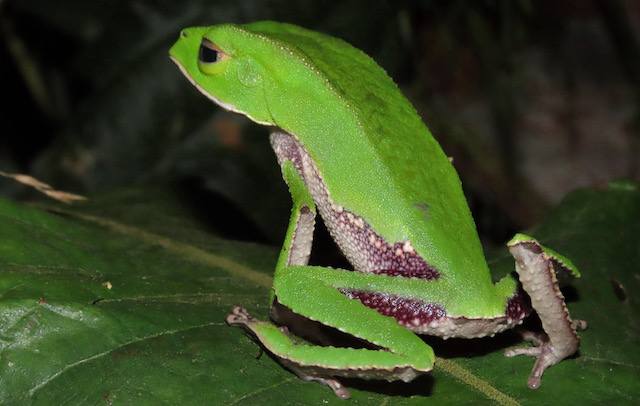
The station science coordinator at Los Amigos was very generous with his time, and he showed us this White-lined Leaf Frog that had been roosting on the same leaf for a few days right by the office; here it is in the evening setting off to forage.
The tour ended with an impressive total of about 375 species of birds. And though no one took part in both tours, the total 20-day total came to about 650 species.
October 7:
Raymond reports from our Alaska - Fall Migration in Gambell tour:
Fall migration on the Bering Sea islands is unpredictable and exciting, as this tour proved yet again! Few things had changed at Gambell since our last fall visit, in 2019. Many ATVs had fallen into disrepair during the height of the Covid-19 pandemic, which made for some bumpy birding, but the locals greeted us with beautiful smiles on their faces, breathtaking ivory carvings, and were as welcoming as ever. A notable difference from our last trip was the presence of sunshine, very little rain, and many vagrant birds from Asia! We encountered all expected trans-Beringean migrants, including large flocks of White Wagtails and Northern Wheatears, two Eastern Yellow Wagtails, many Bluethroats (all without blue throats), and multiple small groups of Red-throated Pipits. Arctic Warblers were surprisingly scarce with only two very brief, very poor views.
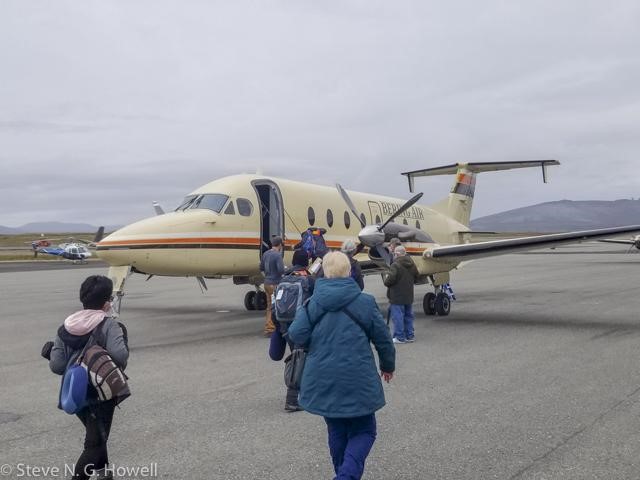
The group boarding the plane to Gambell (Howell)
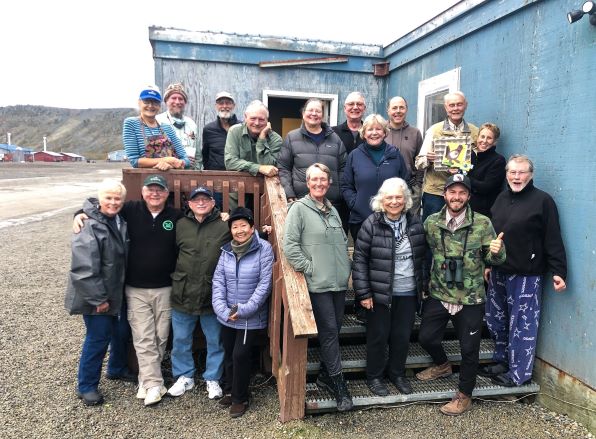
Group photo
Our list of rare Asian vagrants was impressive, with Siberian Chiffchaff, and Middendorff’s Grasshopper-Warbler, representing the most unexpected, both with fewer than 16 records for North America. The juvenile Middendorff’s Grasshopper-Warbler (right) was not merely seen, it was seen incredibly well, with extended scope views on open gravel – very uncharacteristic of the species. Perhaps it had just completed an open-ocean crossing moments before being found and was simply exhausted (most likey), or maybe Raymond scared it into sitting-still when he leapt from his ATV to document the fleeting bird upon initial discovery. Whatever the reason for the uncharacteristic behavior it was most welcome. It’s not often that you hear, “Middendorff’s is in the scope”, or even more impressive, “Middendorff’s is still in the scope!” 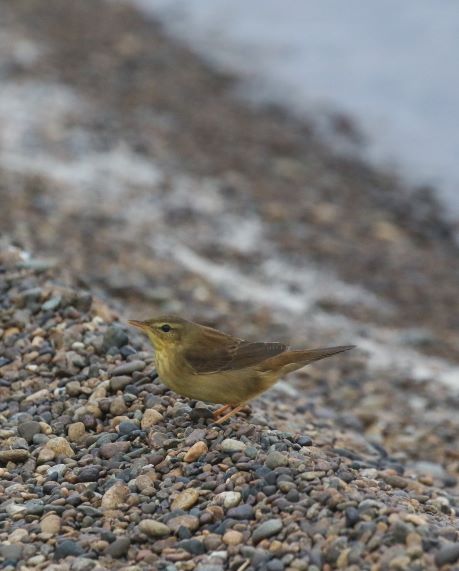
Middendorff’s Grasshopper-Warbler
The list of vagrants doesn't stop there, in addition to the two megas, we encountered multiple Dusky Warblers, and three Siberian Accentors during our routine boneyard stomps.
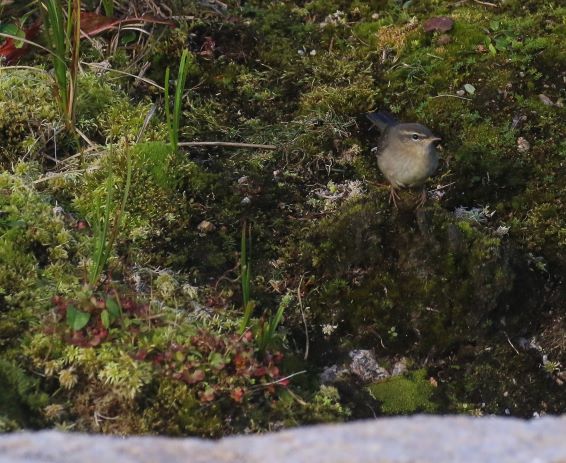
One of at least two Dusky Warblers seen on September 4th in the Far Boneyard
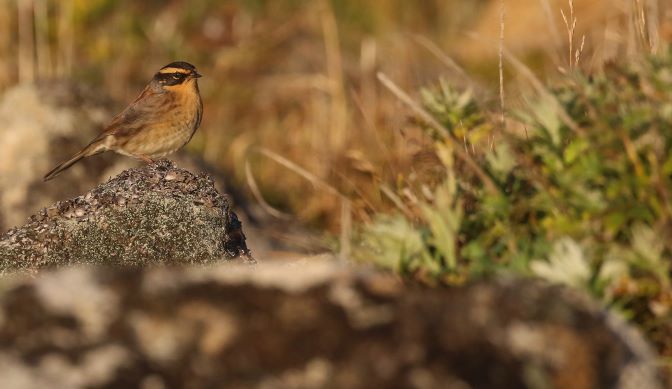
Siberian Accentor
Gray-tailed Tattler made us work hard this year, encountering Wandering Tattler on three occasions, before finally finding one along the west side of Troutman Lake on the day before departure. In general, shorebirds were few and far between on this tour but what views we did have were very nice. A favorite moment for many was enjoying a spectacularly plumaged Sharp-tailed Sandpiper (right) mousing its way through the grass, mere feet from the group, for upwards of 10 minutes.
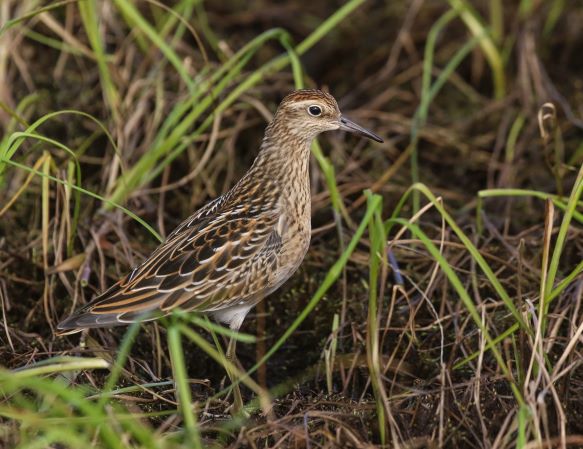
Sharp-tailed Sandpiper
Seawatch seemed slow overall compared to previous years, perhaps due to the slightly later tour dates, or maybe because we had fewer days of north winds. Despite lower species diversity than expected we still witnessed impressive migratory activity with Short-tailed Shearwaters gunning past the point in the thousands, beginning their journeys back to nesting grounds around Tasmania. Yellow-billed Loons were only seen twice, and not for long. Steller’s and King Eiders flew by but were always distant. We made up for these views with close encounters of King, Common, and Spectacled eiders around Safety Lagoon in Nome. Alcids of all shapes and sizes were seen most days at seawatch, with large groups of Horned and Tufted puffins barreling past most mornings. Least, Crested, and Parakeet auklets were seen mostly near their nesting cliffs, some of which were still attending burrows, but most of which were forming small, mixed species rafts offshore.
A small, and lucky, group of birders witnessed a male Snowy Owl fly right over the lodge late one evening while preparing for an evening of seawatch and sewage. Despite our attempts to track it down the runway, with ATVs at full speed, we were unable to refind it. Snowies are a rare sighting this time of year at Gambell, with encounters during only 4 of the last 14 fall trips.
Our group’s good fortune extended well beyond avian sightings as one morning, after a good hard boneyard stomp, we noticed a group of Rough-legged Hawks diving aggressively on something high on the ridgeline of Sivuqaq Mountain. They were persistent, and so were we, hoping to catch a glimpse of their aggravator. Before long an Arctic Fox appeared, running in short bursts along the ridge and then ducking to avoid the talons from above.
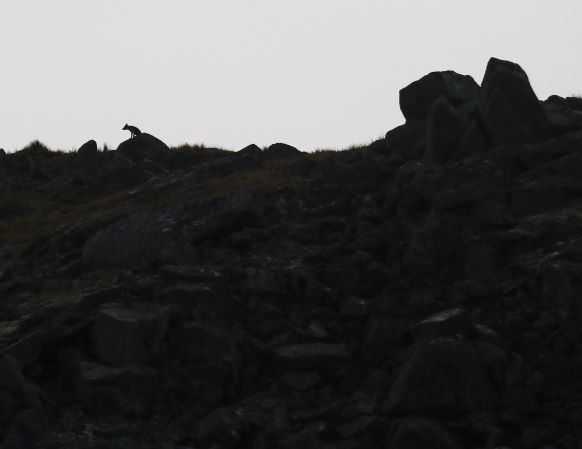
Arctic Fox
To top it all off, on the clearest night of our tour, all participants (and WINGS cooks, Debbie and Larry) were able to watch the aurora borealis dance about above the village of Gambell, while Steve and Raymond slept soundly in the annex, earplugs buried deep in their skulls, completely unaware of the atmospheric lightshow going on outside. It’s fine, we’re not jealous at all.
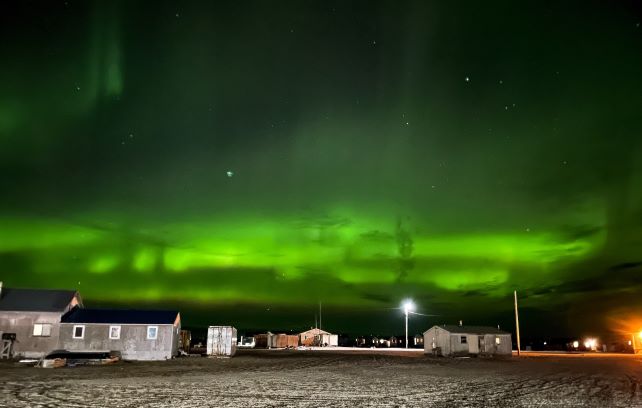
Aurora Borealis above Gambell
Ironically the clear skies that allowed for aurora viewing signaled departure for many of the migratory songbirds that we’d enjoyed during our stay and the next morning was very slow – everything comes with a price, but this was a welcome trade.
Congratulations go out to Gary Rankin for reaching an impressive milestone of 800 species for his ABA list while on this tour, and to Len and Cheryl as the winners of the 2nd annual “What Do You Call Your Clunker: ATV Naming Contest” who clunked into 1st place with their winning name of Middendorf’s Red-backed Aviraptor (Aviraptorix metallica gambelii, obviously).
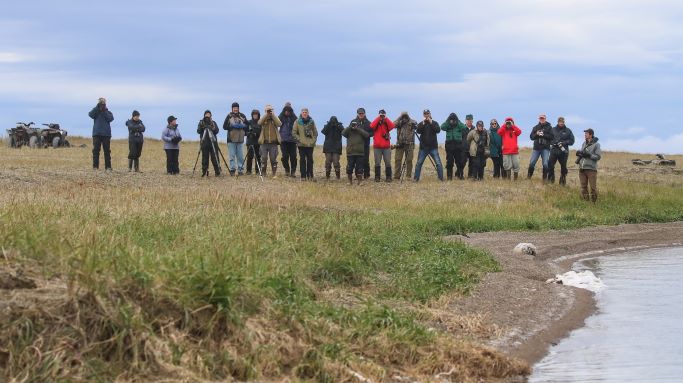
Birders from the perspective of the Middendorff’s Grasshopper-Warbler
It was an absolute blast of a trip and I’m already looking forward to what next year holds. Hope to see you there!
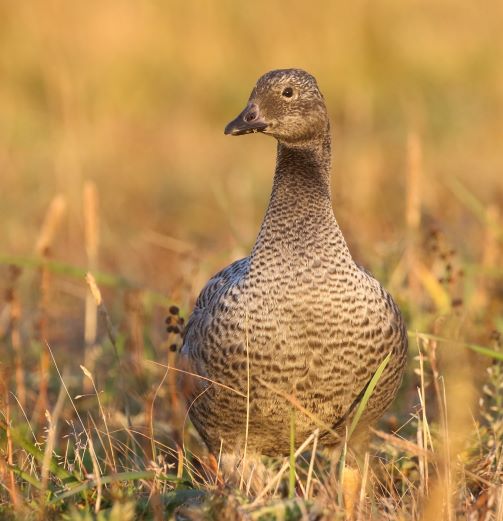
“Quu-qu” the juvenile Emperor Goose (pronounced “Coco” with a throaty quality) out for a stroll with its St Lawrence Yupik family. This bird was taken from a nest over the summer and is being raised as a pet. We hope to see it next year as an adult!
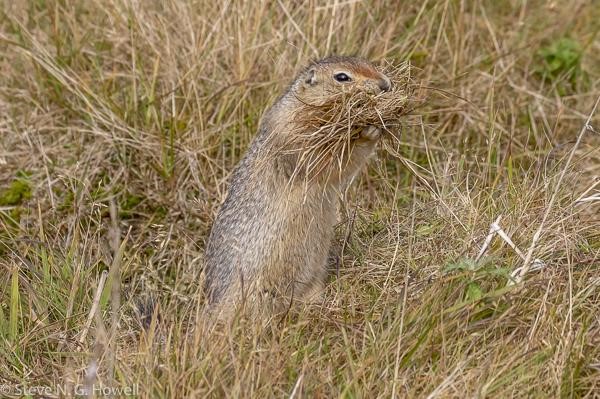
Winter is coming, as evidenced by this Arctic Ground Squirrel prepping its food stores. (Howell)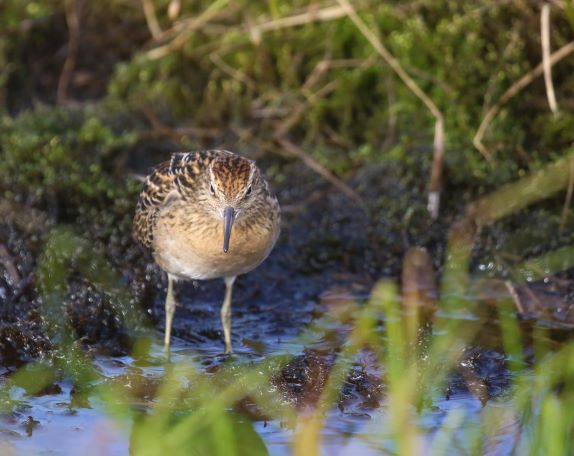
Frontal view of Sharp-tailed Sandpiper in the Ooynik Lagoons south of Troutman Lake.
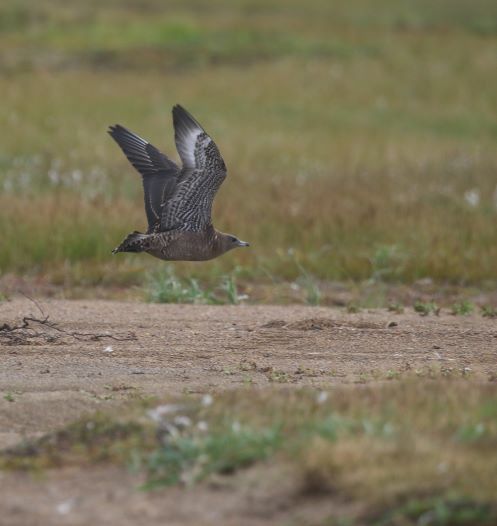
Juvenile dark morph Pomarine Jaeger along the Ooynik Lagoon shoreline.
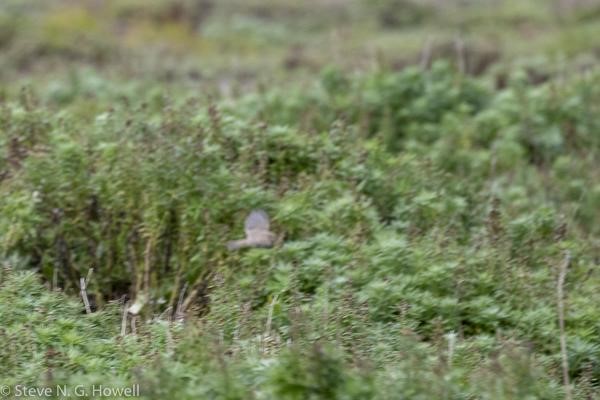
Siberian Chiffchaff in the far boneyard, can’t you tell? (Howell)
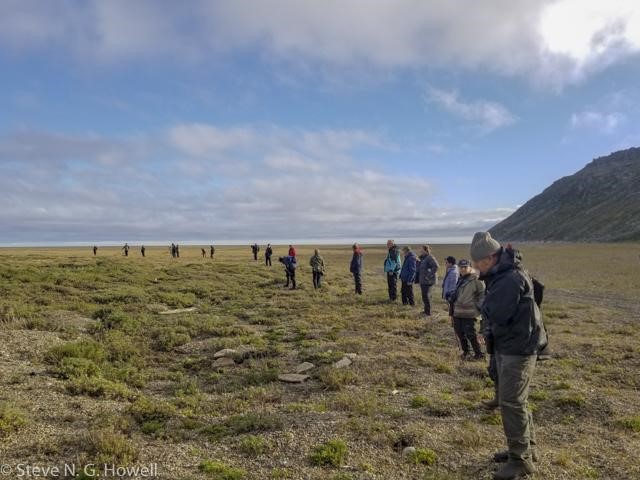
Lining up for a bit of “fun” at the Circular Boneyard, everyone’s favorite mid-morning activity… not! (Howell)

Your intrepid leaders, Steve Howell and Raymond VanBuskirk (Kay Hawklee)

Driving past the dump (Howell)
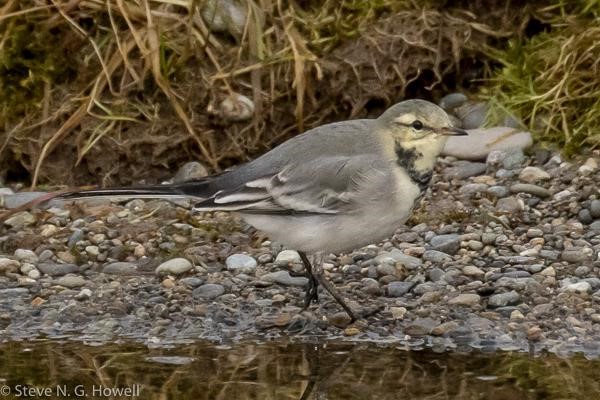
Not so white White Wagtail (Howell)
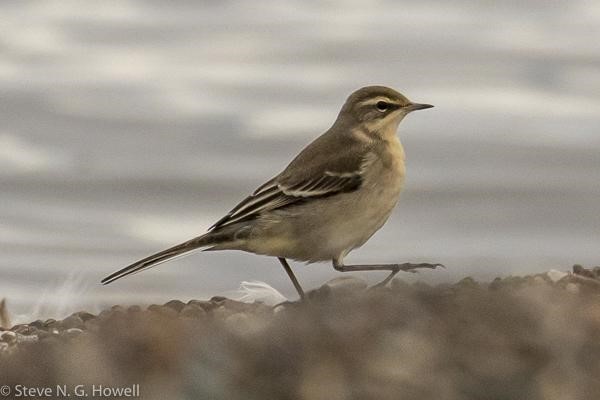
Not so yellow Eastern Yellow Wagtail (Howell)

Debbie and Larry Brooks, our fabulous chef and her bubble master. (Kay Hawklee)
October 1:
Rich Hoyer reports from our first tour to Peru since the start of the pandemic
Rich Hoyer reports from our first tour to Peru since the start of the pandemic, and everything went exceedingly well. Some of the lodges and hotels were running with a much-reduced staff, still rebuilding since opening back up to international tourists in July, but you wouldn’t have known it. Clean rooms, excellent meals, and well-maintained trails greeted us at every stop.
We hit the ground running with a full day in the high wetlands near Cusco and superb birding in the Sacred Valley, where a hummingbird feeding station with Giant Hummingbird, Shining Sunbeam, Black-tailed Trainbearer, and Tyrian and Scaled Metaltails was a highlight. We ended the day with this Peruvian Pygmy-Owl, which came in cooperatively for a tour first. The ruins of Machu Picchu were as fabulous as they promise to be, and while there we had a very close encounter with a pair of the lovely Inca Wren as we climbed through the bamboo to the upper platforms and their magnificent views. We then birded the forests along the Urubamba River and had wonderful views of this gorgeous Masked Fruiteater.
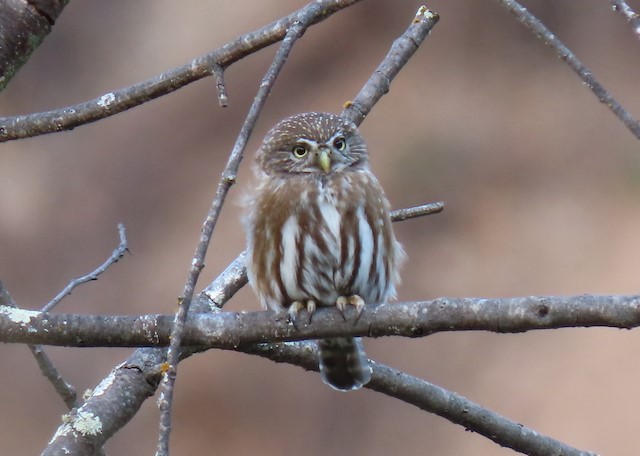
Peruvian Pygmy-Owl
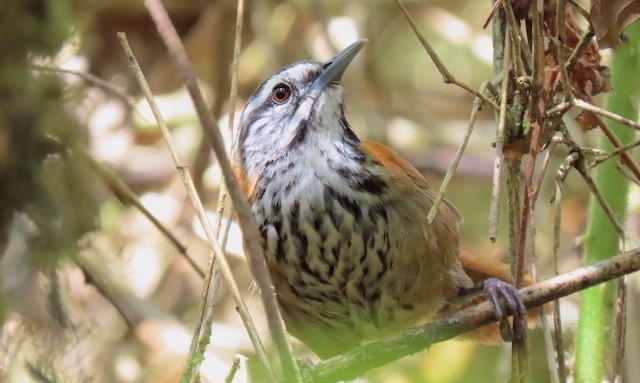
Inca Wren
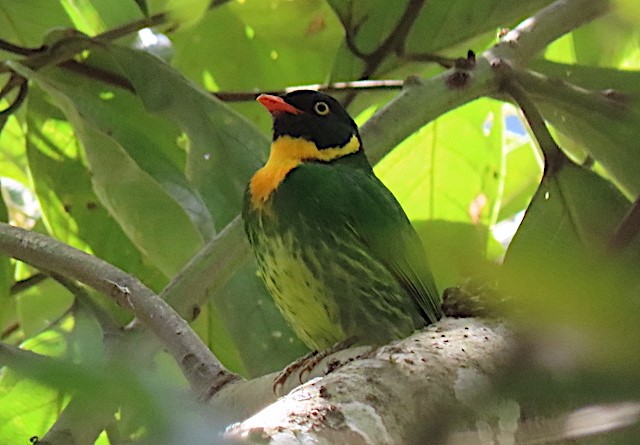
Masked Fruiteater
After birding the dry, rain-shadow side of the mountains north of Cusco, where we saw Mourning Sierra-Finch, White-winged Cinclodes, and Streak-backed Canastero, we dropped down through the moist cloud forests to Wayqecha Biological Station with its enchanting view of hillsides in all directions covered by pristine montane forests. We saw most of the specialties here, including a pair of Urubamba Antpittas at close range in the dark mossy understory. This Yungas Pygmy-Owl and this ridiculously fearless Puna Thistletail just down the road were among many other wonderful birds we saw here.
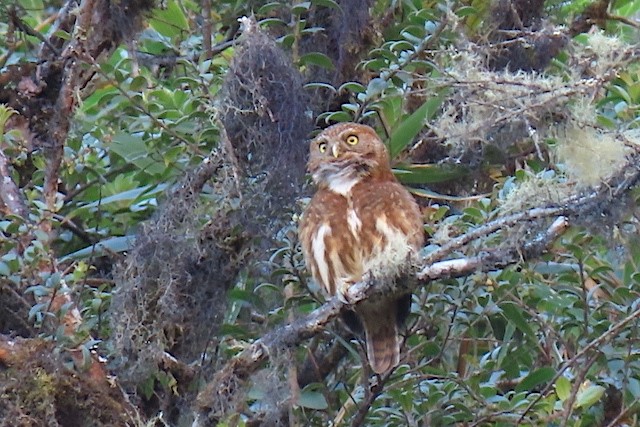
Yungas Pygmy-Owl
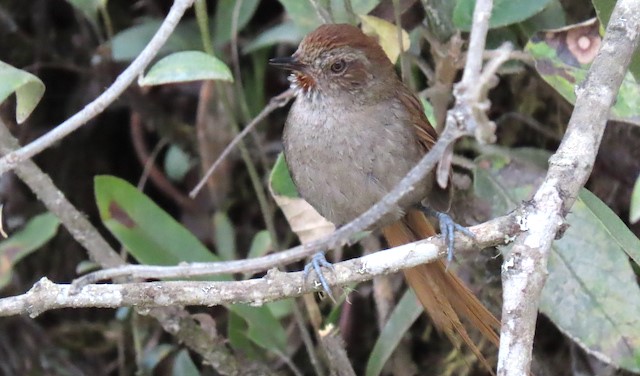
Puna Thistletail
One of the most exciting sightings of the tour was a mammal in the higher cloud forests at 2000 m elevation. We were in touch with a couple of regular WINGS clients who happened to be on a totally separate tour just a week ahead of us, and they spotted what turns out to be Brown’s Toró clambering into its mossy nest, a caviomorph rodent (that is, related to the guinea pig, capybara, agouti, spiny-rats, and not closely related to rats). What was most amazing is that this species was discovered only in 1999 (described in 2006), and the only evidence of its existence until this week was the lone type specimen in the Lima museum. We hope that some more details of its natural history can be learned from this amazing find.
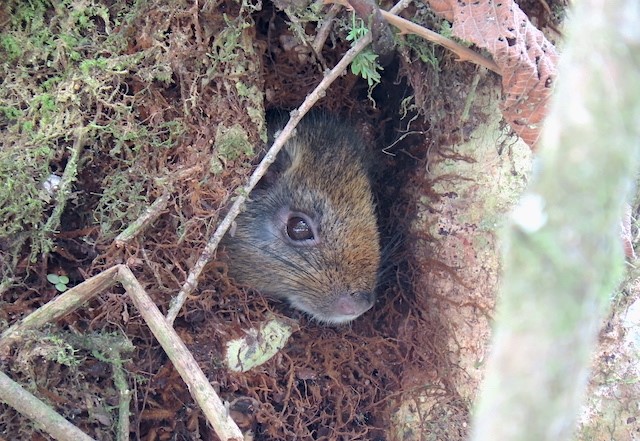
Brown’s Toró
Among the highlights at our mid-elevation stop were the Andean Cock-of-the-rock lek, Peruvian Piedtail at garden flowers, a pair of Squirrel Cuckoos on the roadside (one carrying a praying mantis back to their nest), a kettle of 87 Swallow-tailed Kites taking off from their night roost and heading south to winter in Bolivia and Brazil, and this male Versicolored Barbet accompanied by a female Silver-beaked Tanager at the lodge’s feeders.
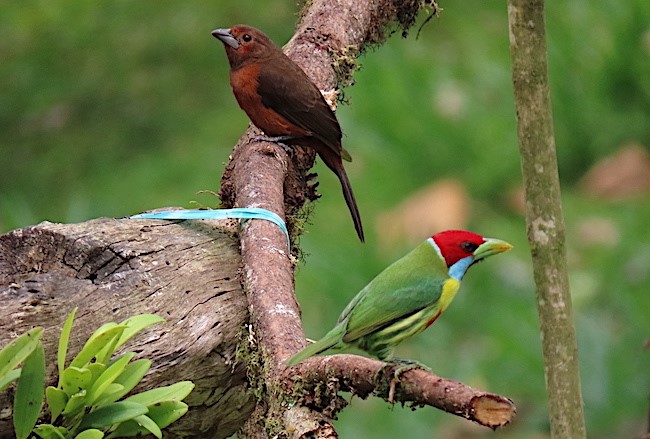
Versicolored Barbet and a female Silver-beaked Tanager
Our last birding lodge was Villa Carmen, where an explosion of tropical diversity greeted us, and the soundscape of so many birds singing was almost overwhelming. We saw over 100 species before lunch each day, with a glowing male Band-tailed Manakin getting the most votes for most memorable bird of the tour. Chestnut-capped Puffbird, Rufous-capped Nunlet, Tawny-bellied Screech-Owl (nesting down in the top of a small, dead palm stem behind cabin 3), multiple Bluish-fronted Jacamars, Blue-throated Piping-Guan (with it’s amazing rattling wing display), Gray-cowled Wood-Rail in the trail almost at arm’s length, and this ear-piercing Red-throated Caracara putting on a show were just a few of the favorite sightings.
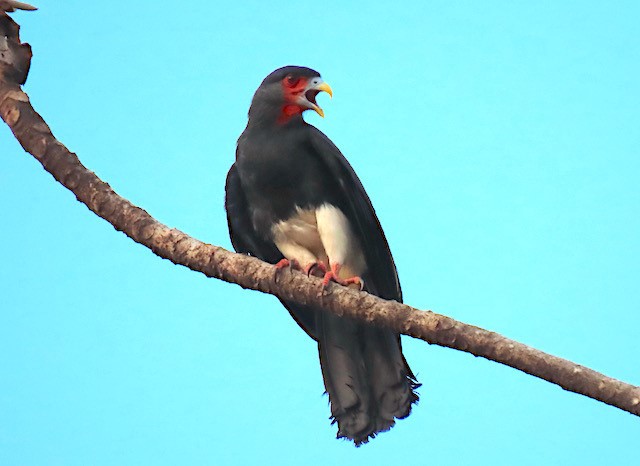
Red-throated Caracara
Two new hummingbird feeding stations just up the road from Villa Carmen really filled out our birding list, one of them hosting 18 species at the feeder, including this amazing male Rufous-crested Coquette. A bonus there was Buff-tailed Sicklebill that came to its favorite heliconia that was growing off to the side of the garden.
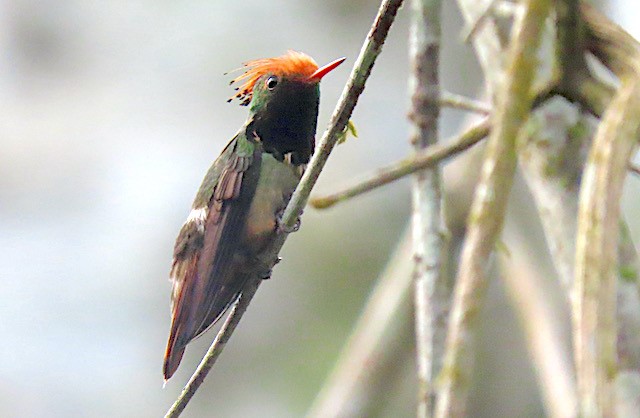
Rufous-crested Coquette
Finally, among the exciting non-bird highlights were the amazing butterflies we saw everywhere. This minute metalmark Syrmatia lamia on our first morning at Villa Carmen was special, as this rarely seen species represents the first sighting in the entire Manu region, the most diverse area in the world for butterflies and also one of the most thoroughly sampled regions anywhere.
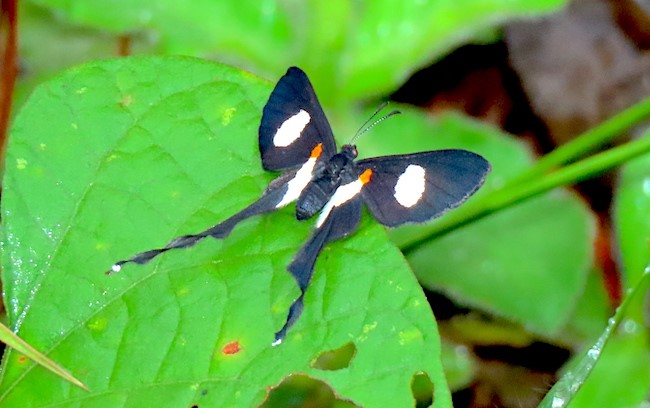
Syrmatia lamia
I’m now heading onward for our Jungle Lodges of the Madre de Dios tour, where more fabulous birding and natural history experiences await us.
September 30:
Jake has wrapped up a successful Arizona and Utah tour
We just wrapped up the WINGS tour through northern Arizona and southwestern Utah. Over 2,000 miles of canyon country were explored from the cactus-studded slopes around Phoenix to the flexible limber pine trees at 9,000 feet in Bryce Canyon National Park.
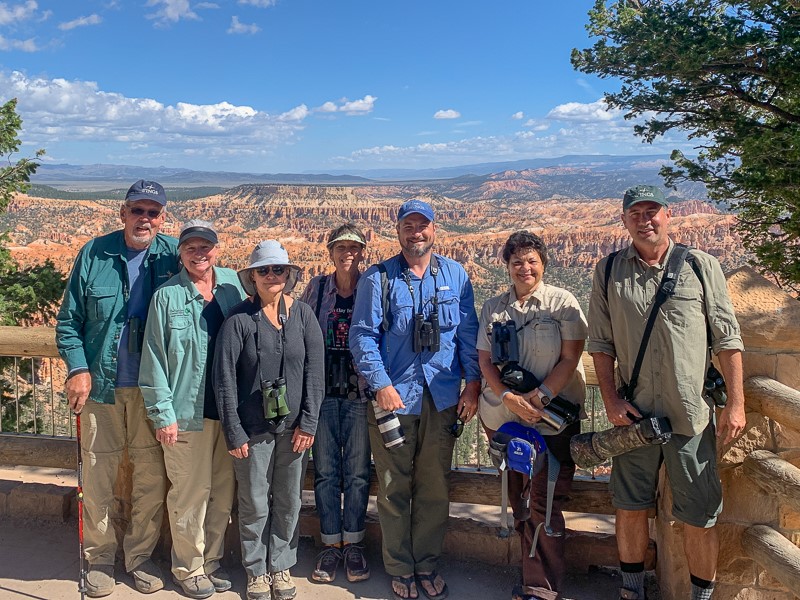
Our group overlooking Bryce Canyon’s famous Amphitheatre.
In the 100 plus degree temperatures we decided to work the shoreline of Roosevelt Lake. We pulled close to the edge and within minutes a juvenile Sabine’s Gull landed just offshore. As we were trying to document the gull another bird slowly came to rest on the water right next to the gull. It was a complete surprise juvenile Long-tailed Jeager!
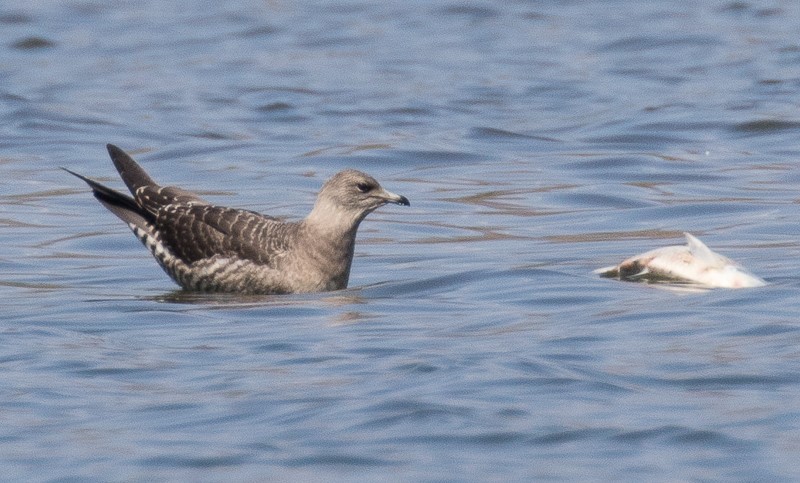
This Long-tailed Jeager found on tour, a first for Gila County.
California Condors were a highlight on this tour as we documented nine birds over 3 days. It was great to see this many of a species once on the verge of extinction. At one point we even saw a Condor set amongst throngs of other scavengers all waiting patiently for this big bird to open up the recently deceased.
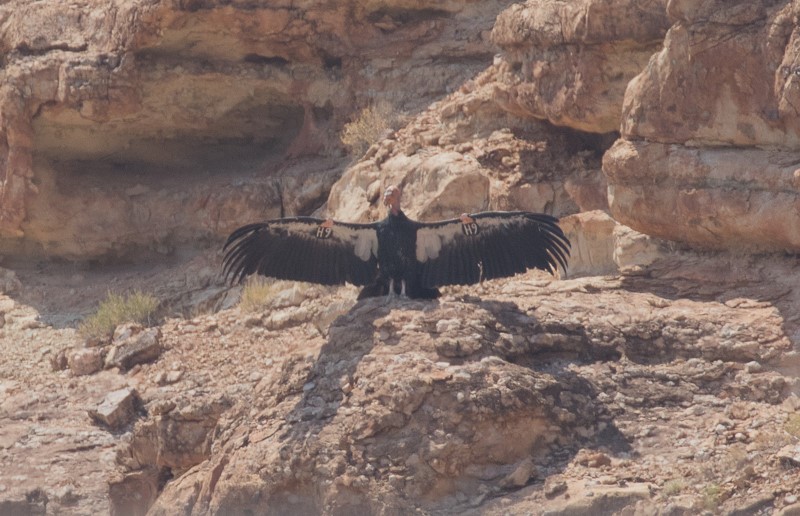
A California Condor casts a long shadow.
The rushing waters of the Virgin River cut down through Zion Canyon with precision. We enjoyed strolling along the water’s edge and eventually found what we were searching for. An American Dipper was unusually approachable as we watched it foraging through the ripples.
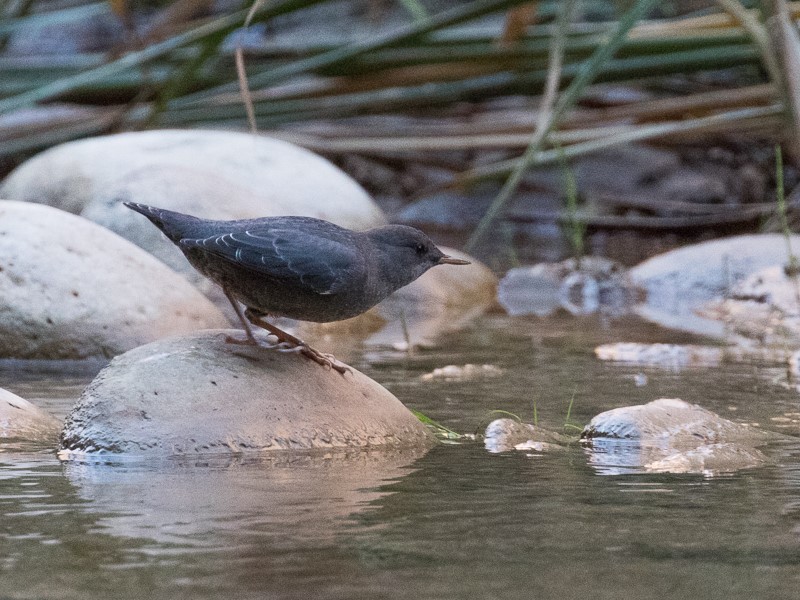
American Dipper fed slowly amongst Zion’s cliffs.
Any and all migrant traps were checked and some of them were very productive. Flocks of warblers including Hermit, many sparrows including many Vesper, and singles of flycatchers such as Hammond’s were all utilizing these lush oases.
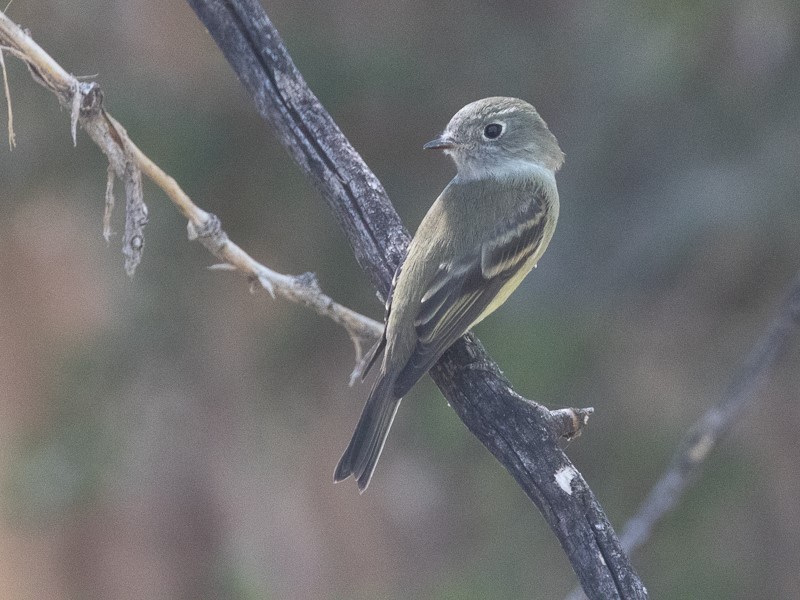
We saw several Hammond’s Flycatchers at migrant traps.
August 20:
Steve Howell recently joined our Costa Rica in July tour - as a participant!
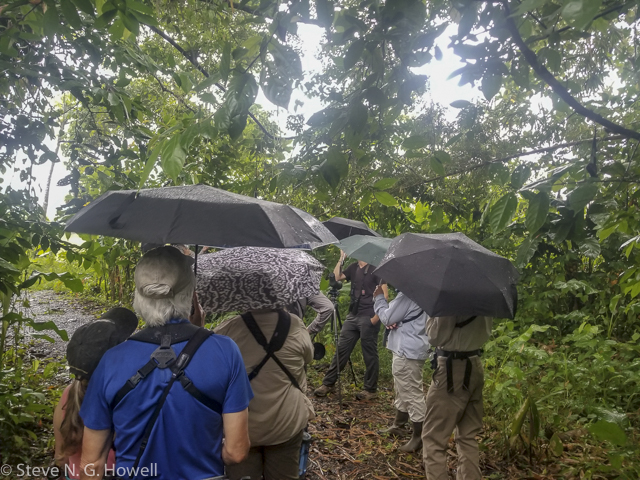
Steve Howell reports from the recent summer Costa Rica tour, when he went along as a participant (!), a pleasant change from leading and a welcome escape from the drought in California. It was the rainy season, but the umbrellabirders were well prepared.
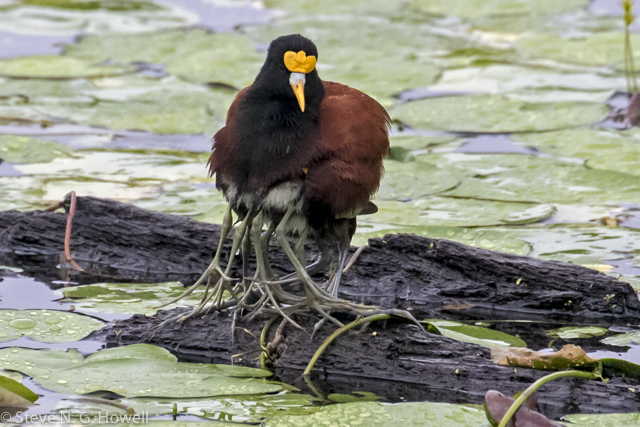
At this season there were lots of juvenile birds to enjoy, like these baby Northern Jacanas that took refuge under their dad when the rain got too heavy!
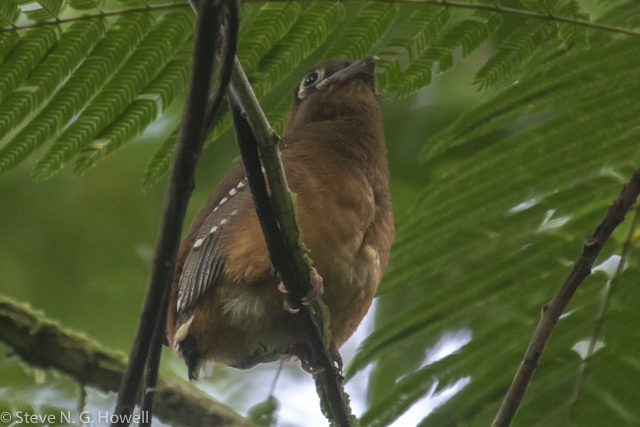
Or this adorable fluffball Black-throated Trogon, barely able to fly
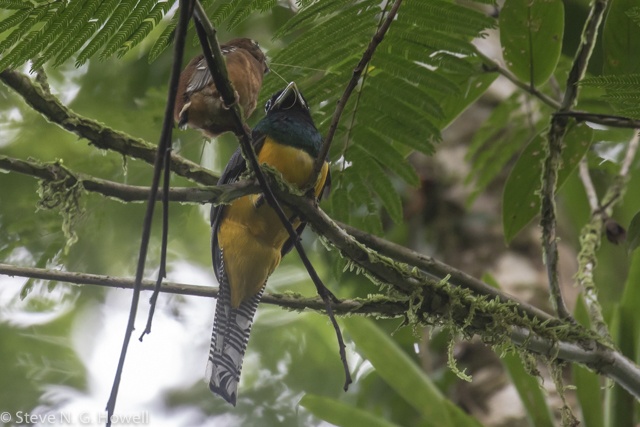
Here with the adult male—otherwise we would have had trouble figuring what species it was!
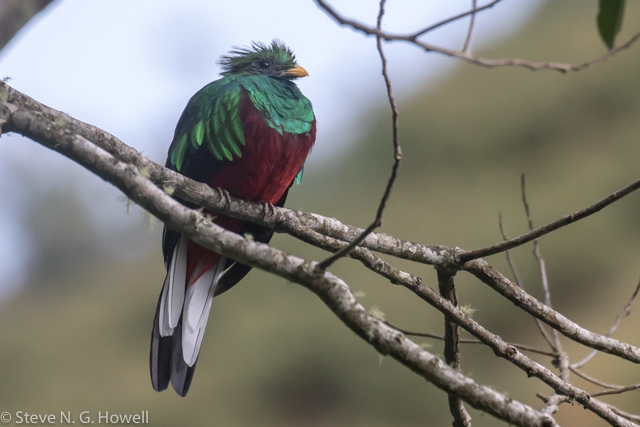
Late summer also means molt, but even without full plumes this adult male Resplendent Quetzal was still absolutely stunning!
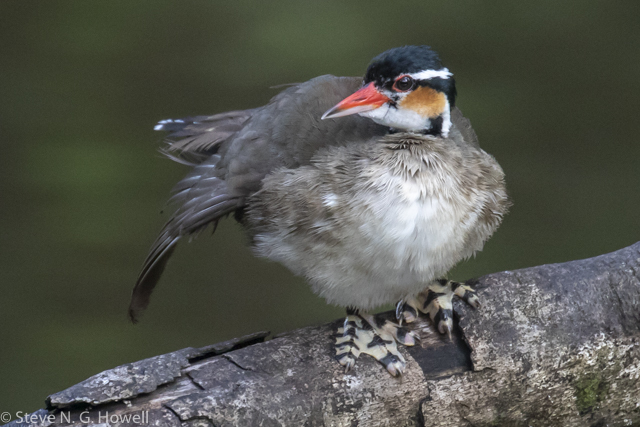
One morning a female Sungrebe sat and preened unconcerned for many minutes—look at those feet.
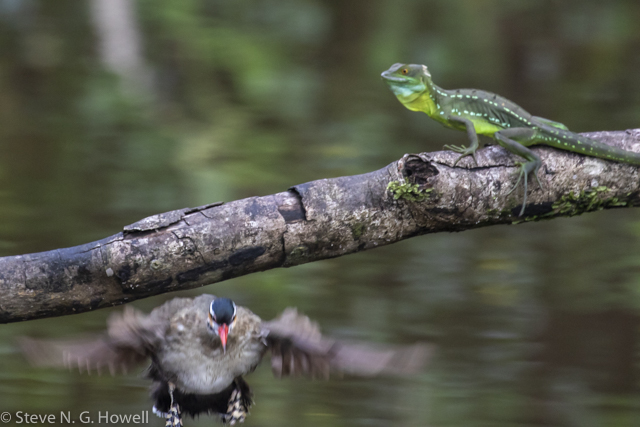
Until a Green Basilisk decided to chase her off!
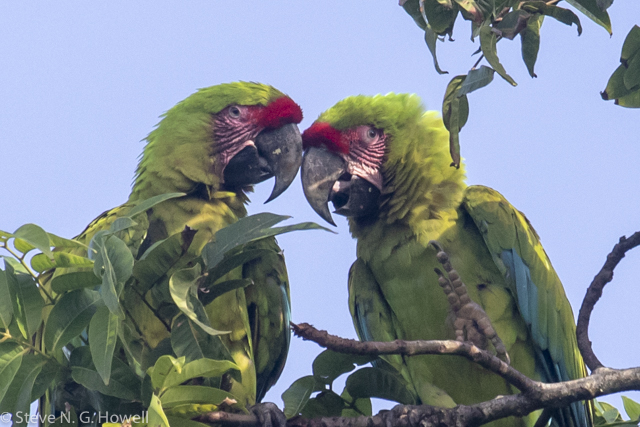
Other highlights ranged from confiding Great Green Macaws...
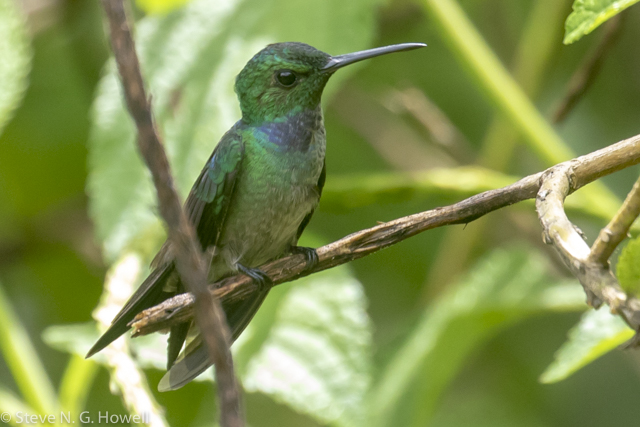
To the tiny Blue-chested Hummingbird
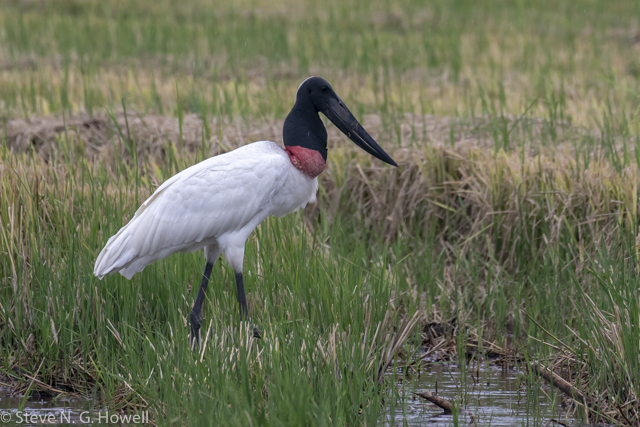
And a majestic Jabiru close beside the road!
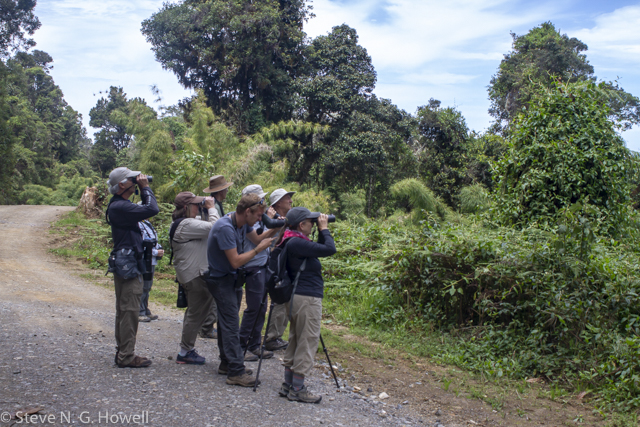
It wasn’t all rainy—here a beautiful morning in the high elevation oak forest on Cerro de la Muerte
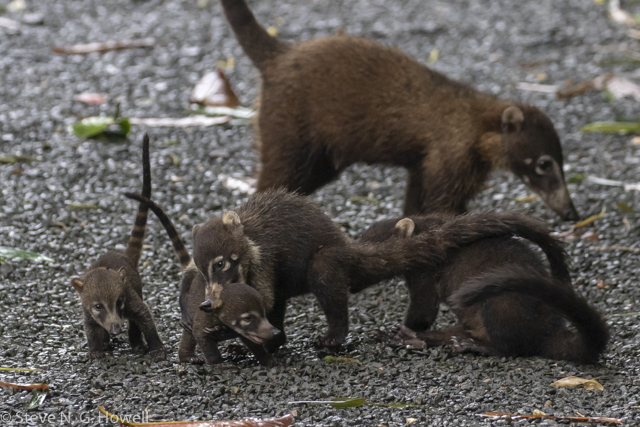
And the many non-avian highlights included extended family groups of White-nosed Coatis. There are still spaces on the forthcoming October Costa Rica tour, so if you’re looking to see lots of great wildlife and escape the madness in the US...
August 17:
Jake Mohlman reports from a wet, green Sonoran Desert
Our second departure of our Arizona Second Spring tour recently wrapped up. The turbocharged van had no trouble covering 1143 miles of mountain roads, smooth highways, and water crossings as we tallied 185 species for the trip. Highlights were countless and included 13 species of hummingbirds, 14 sparrow species, and a quail sweep.
We worked hard to find some things including a 2 mile hike up Miller Canyon, gaining over 2,000 feet of elevation, in order to secure our viewing pleasure of a male White-eared Hummingbird defending a nest and territory. Other hummers encountered were a female Lucifer coming into a blooming agave in Box Canyon, and a true stunner when a male Berylline Hummingbird came into a perfectly placed feeder on a remote mountain trail.
Non-avian highlights were aplenty including a sow Black Bear with 3 cubs in tow, a nocturnal Ringtail, and several range-restricted snake species including the rare Banded Rock Rattlesnake in Huachuca Canyon.
Other regional specialties couldn’t hide from our curious eyes and included a singing Five-striped Sparrow that came within 10 feet of our group in Box Canyon, close views of Mexican Chickadees as they came into and out of their nest cavity, and several Red-faced Warblers at eye level gleaning for insects on Mt. Lemmon.
Perhaps saving the best for last we had an amazing encounter with a pair of Montezuma Quail as they exploded at our feet and ran into and around our group undoubtedly trying to distract us from some nearby concealed young.
All photos by Jake Mohlmann except the Montezuma Quail (Jim Livaudais).
Our excited group overlooking Cave Creek Canyon
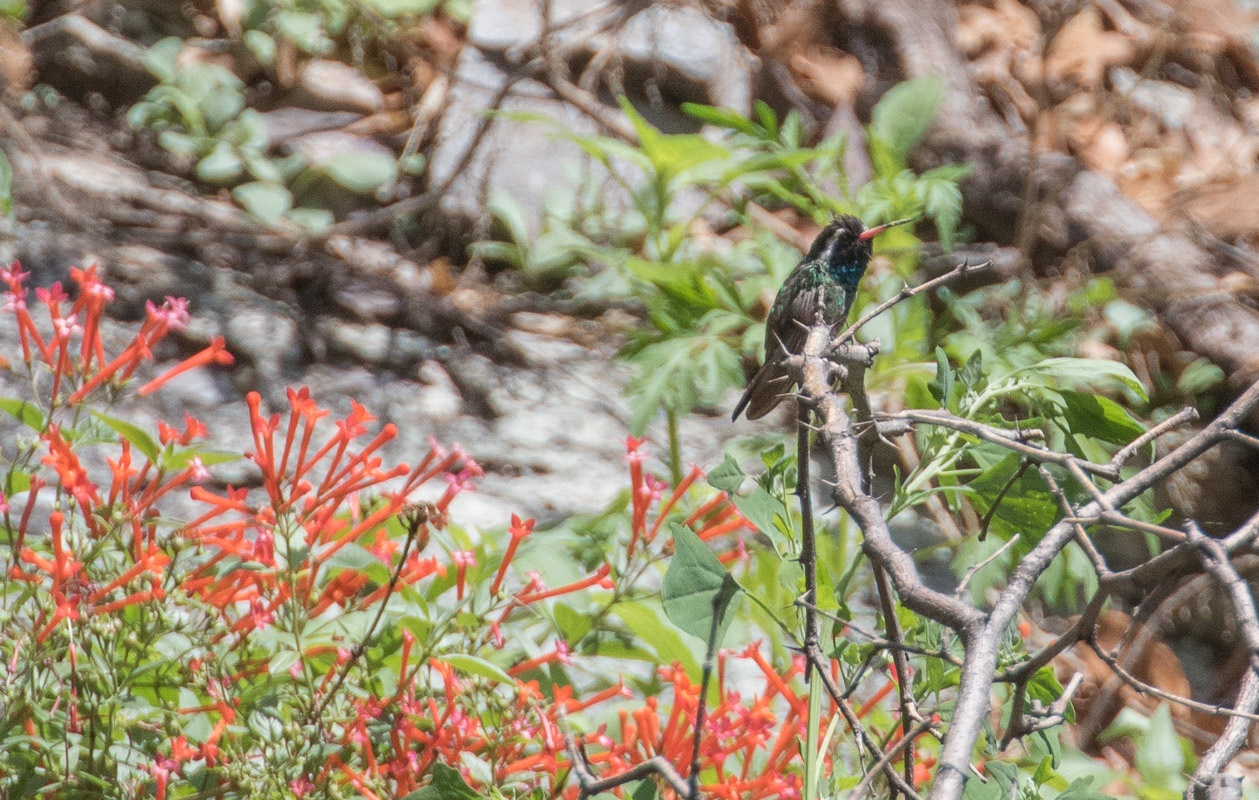
A rigorous hike yielded this male White-eared Hummingbird.
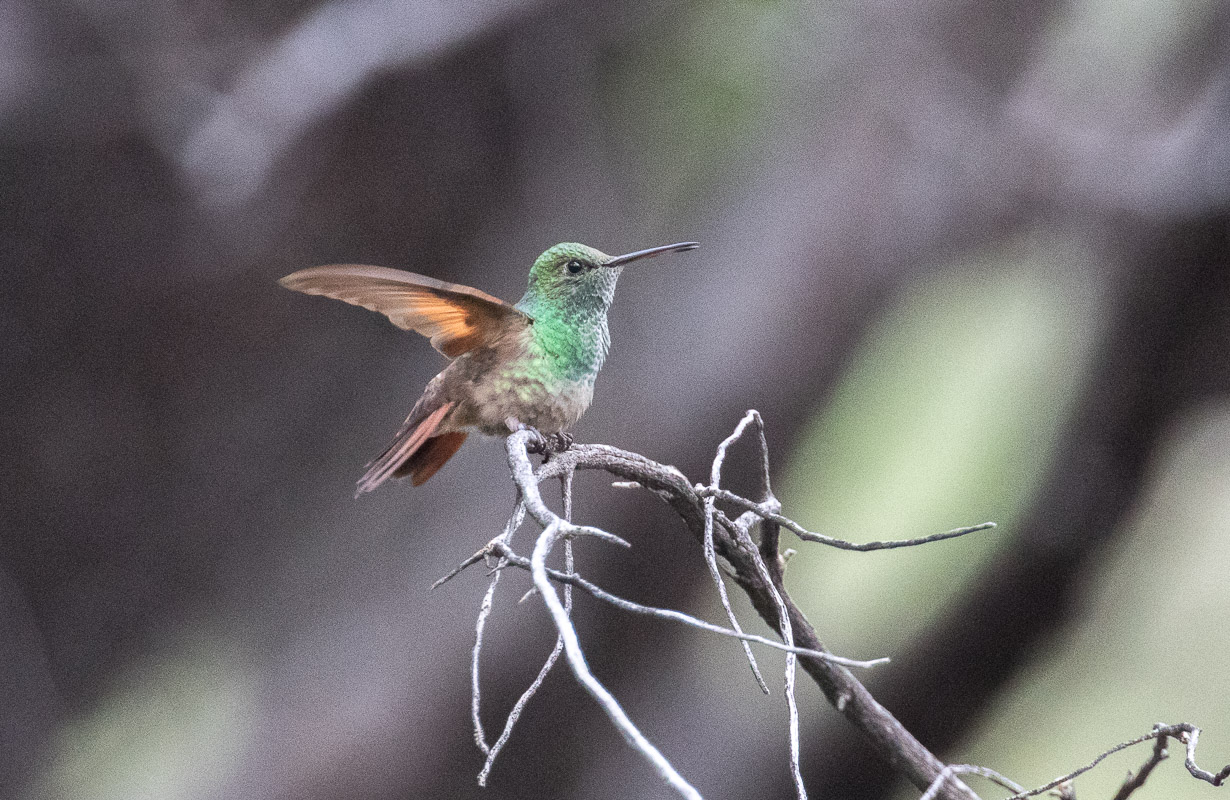
We worked hard for Berylline Hummingbird, here the stunning male.
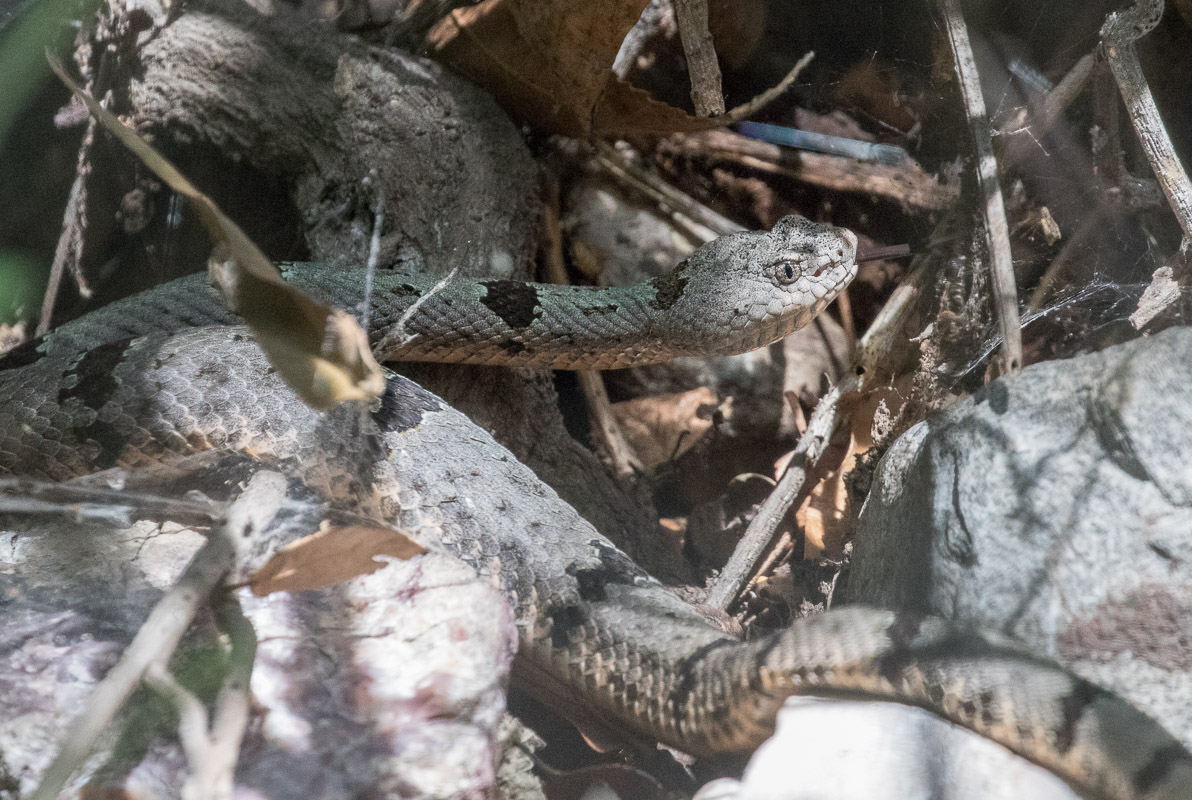
This Rock Rattlesnake crossed our path in the Huachucas.
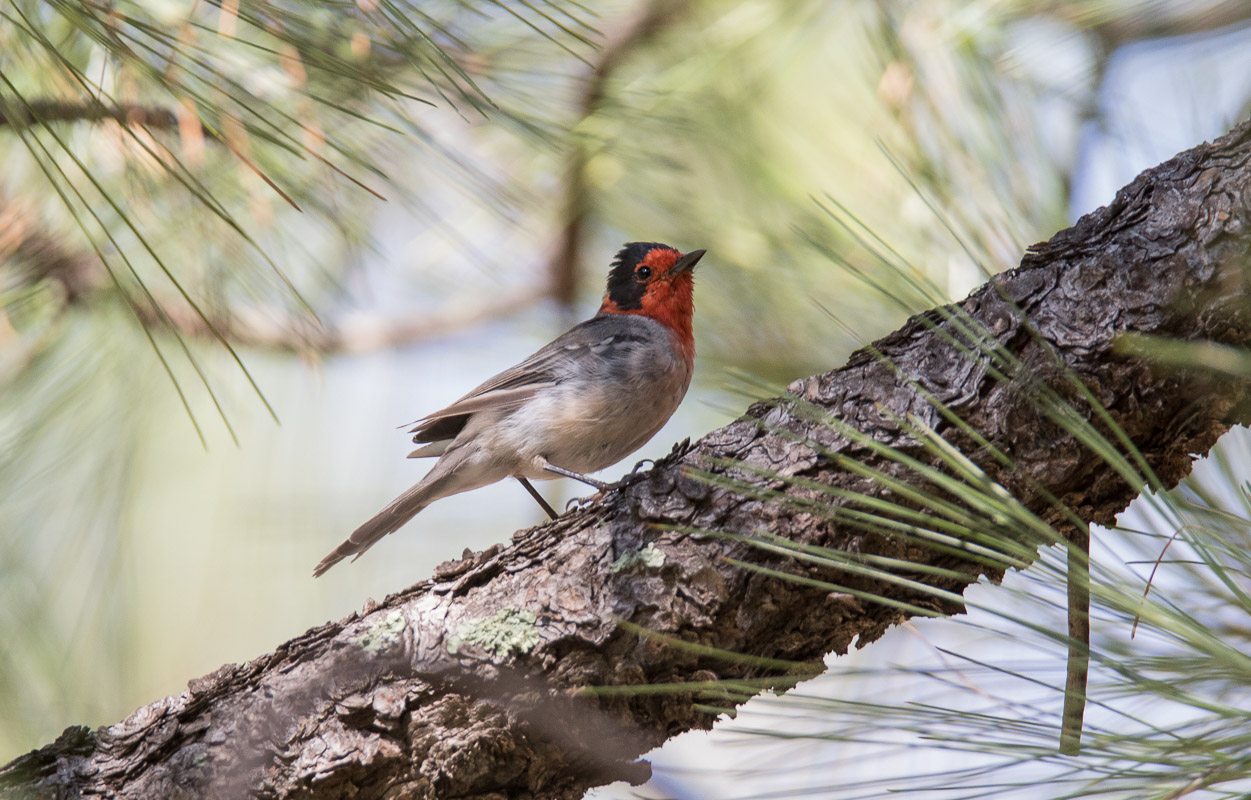
Red-faced Warbler was seen several days, sometimes quite close.
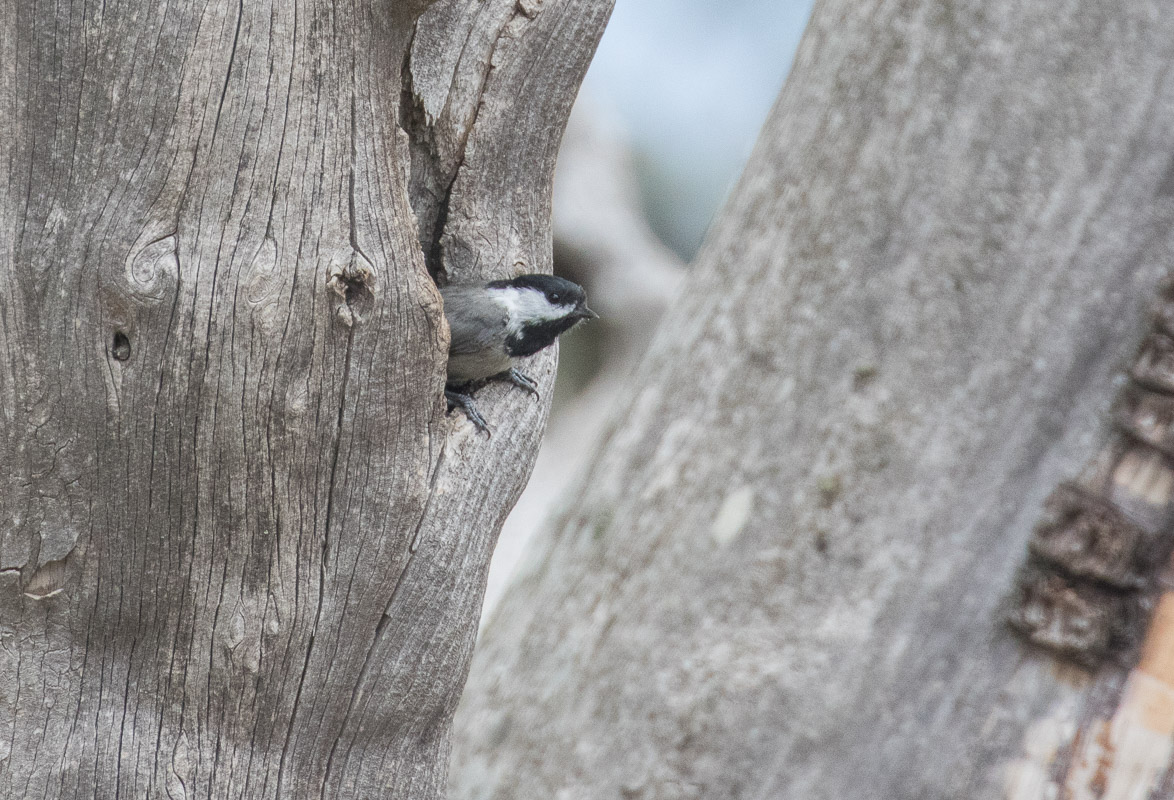
This adult Mexican Chickadee finally revealed its nest in the Chiricahuas.
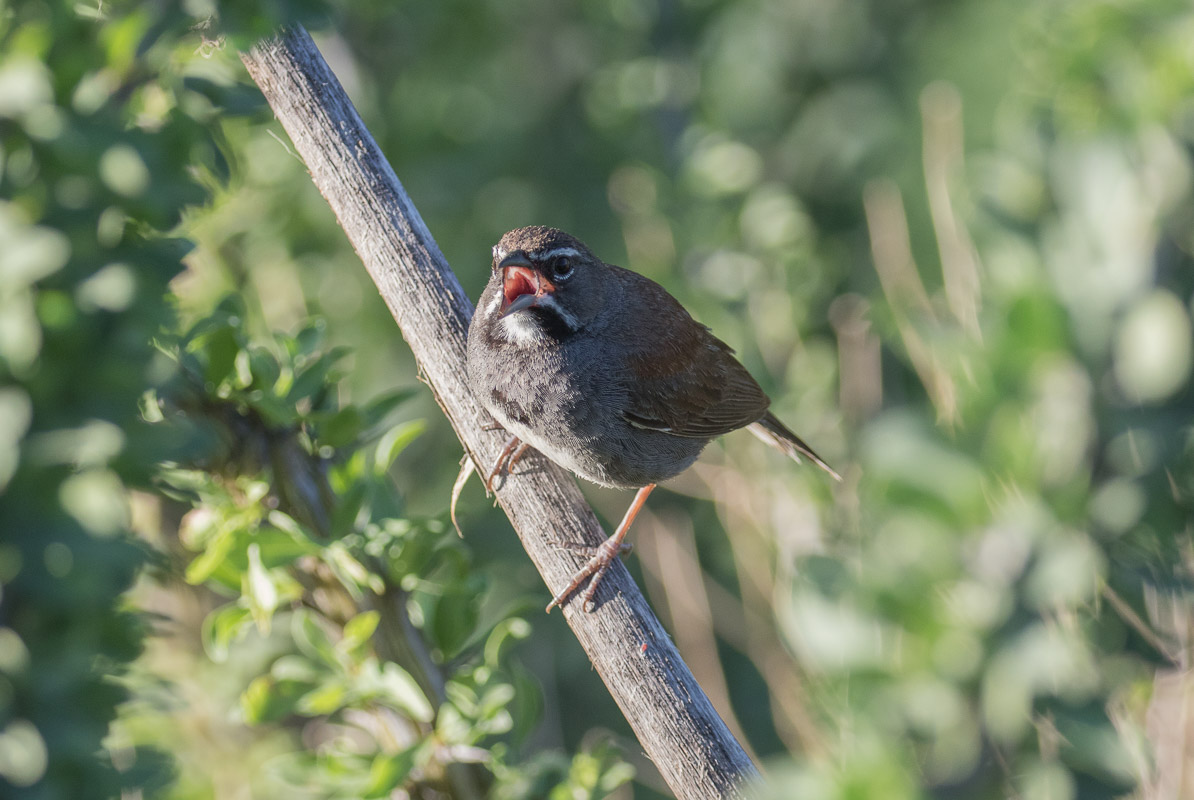
The closest views I’ve ever had of Five-striped Sparrow.
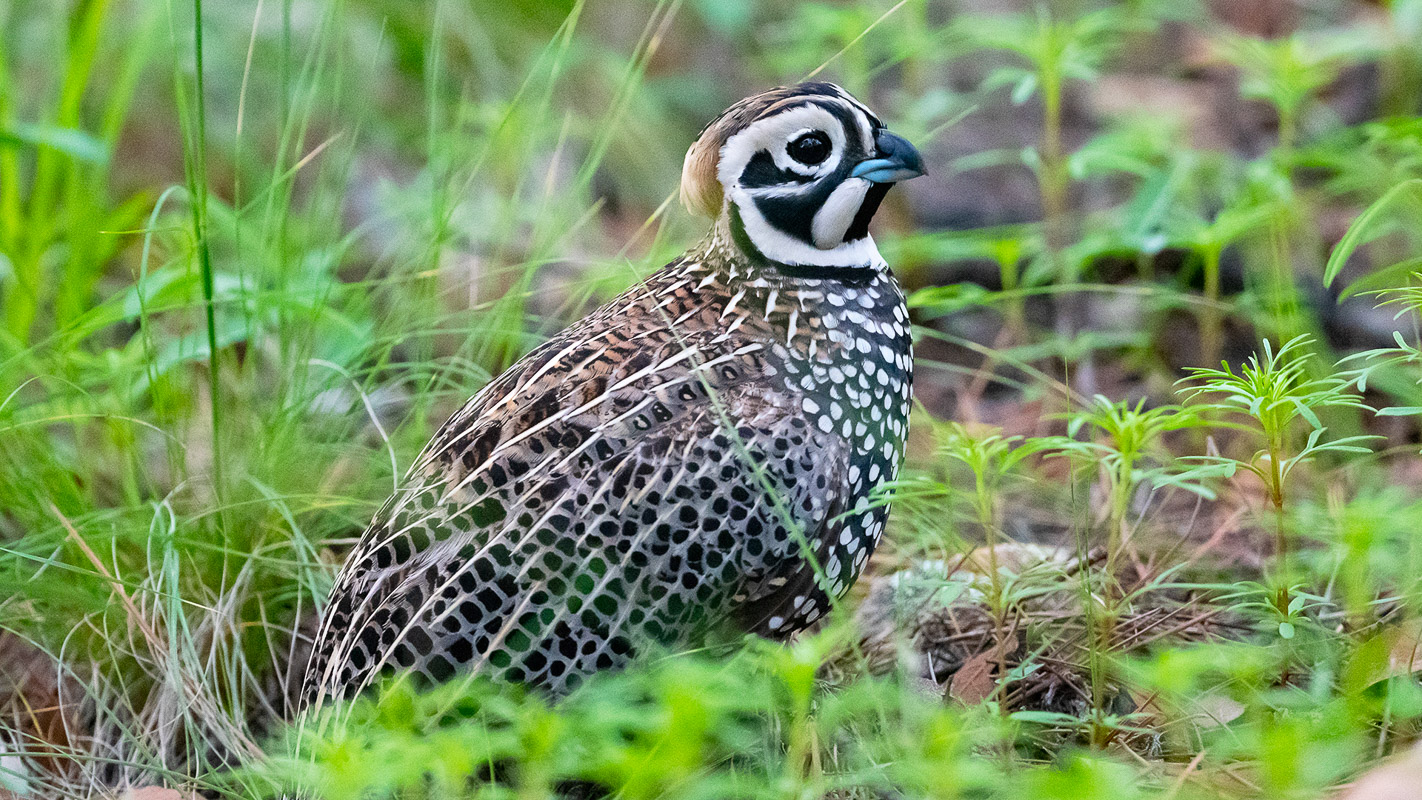
A male Montezuma Quail almost walked on our feet in Sawmill Canyon. Photo by James Livaudais.

